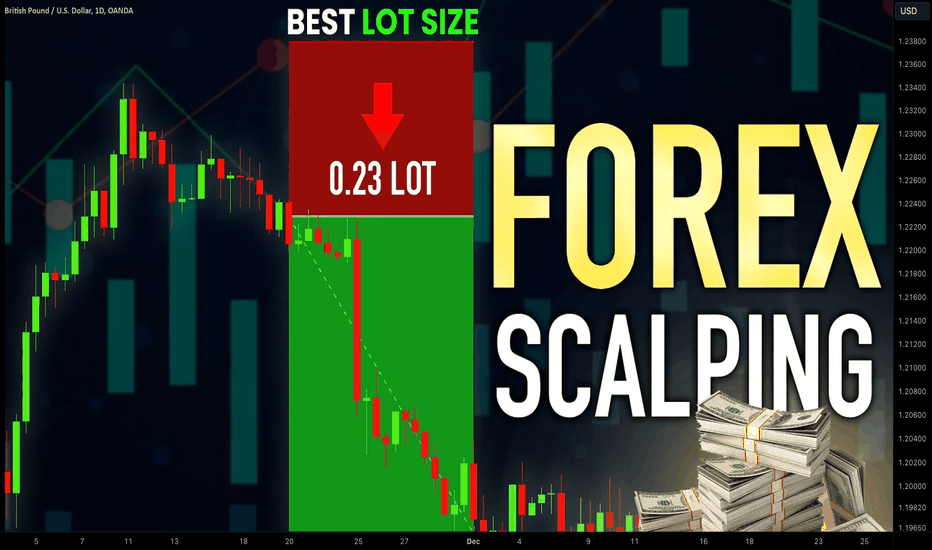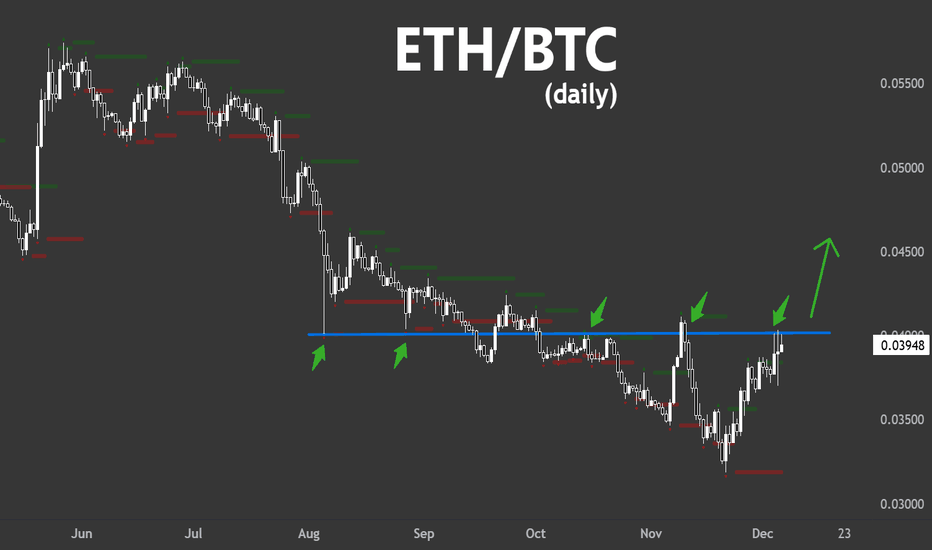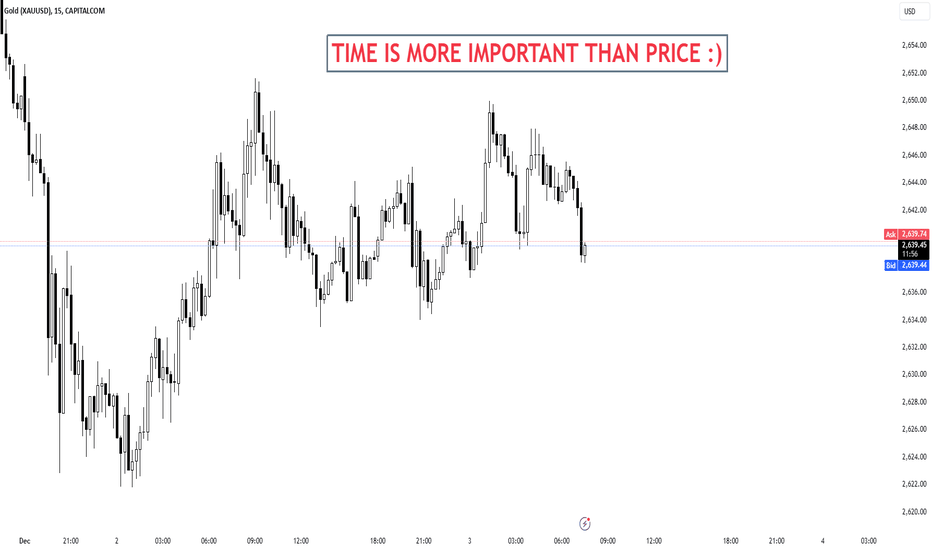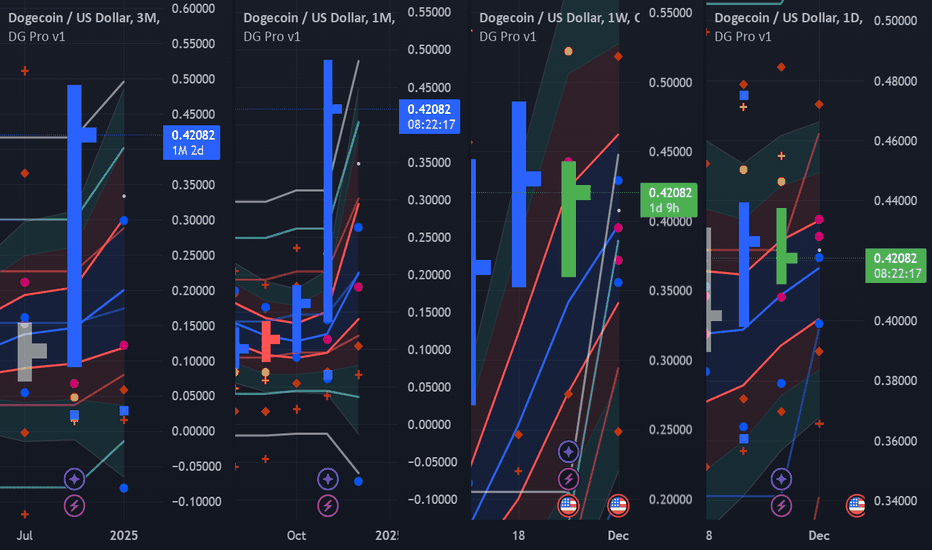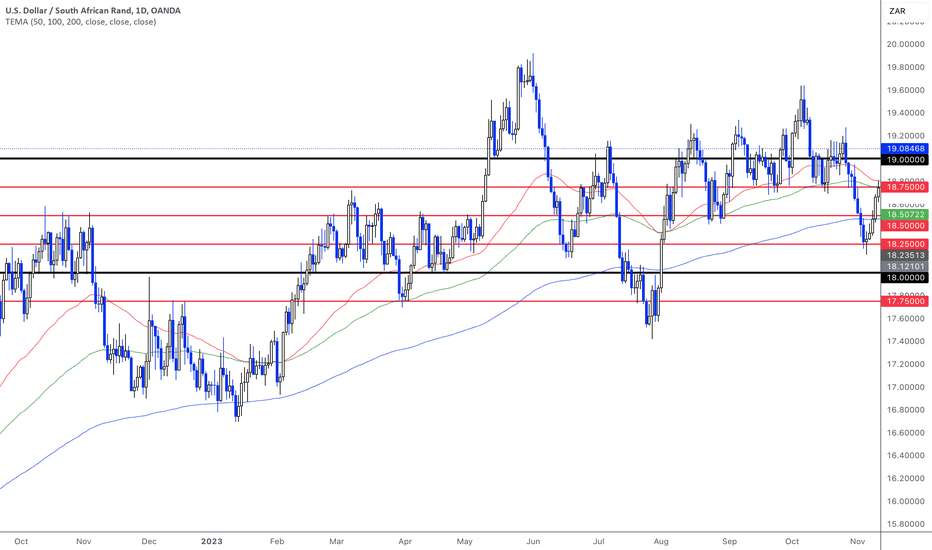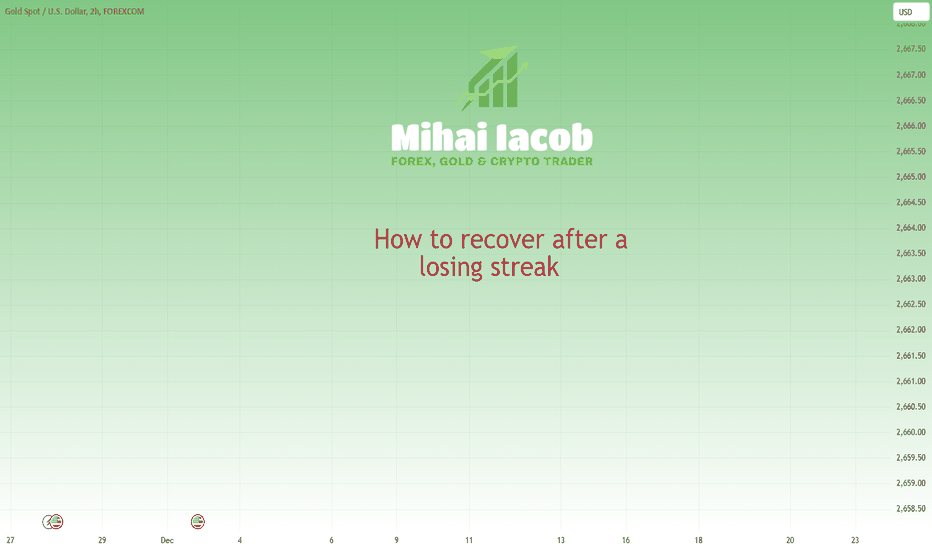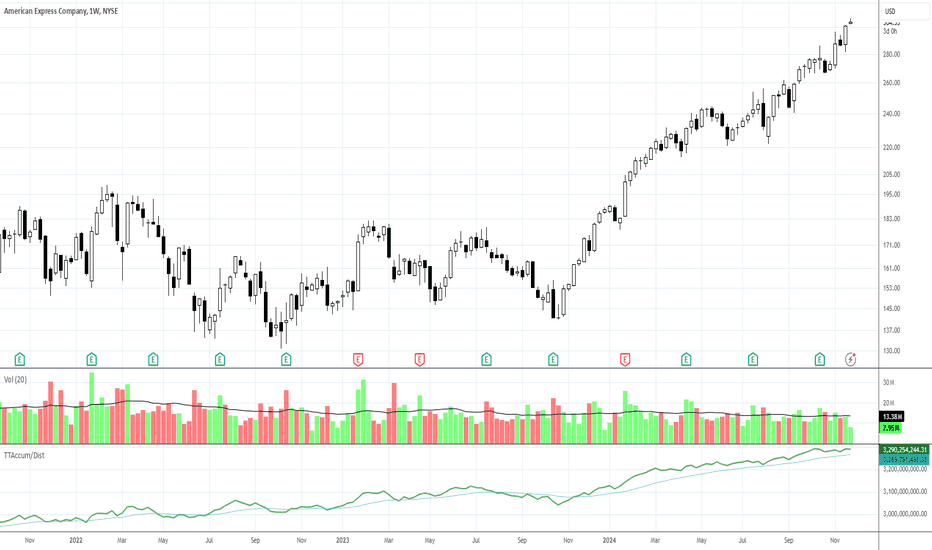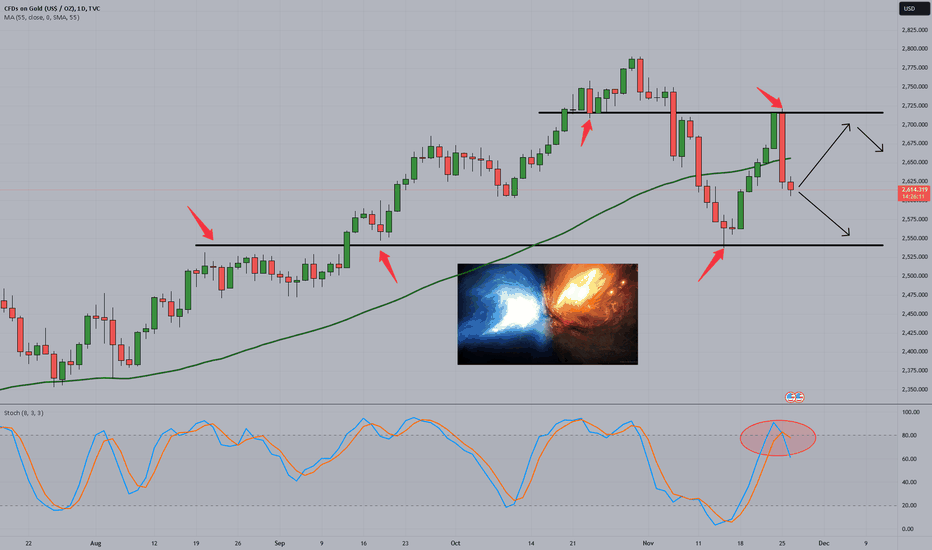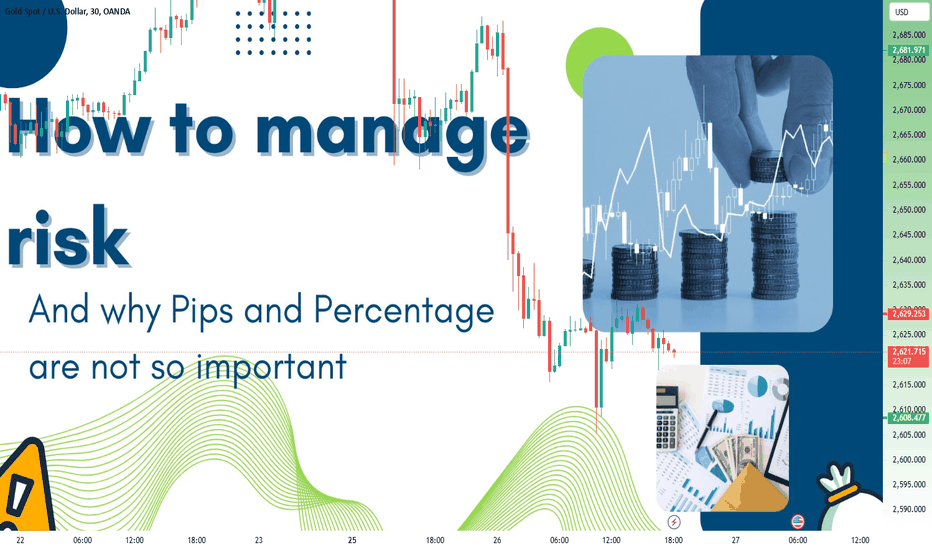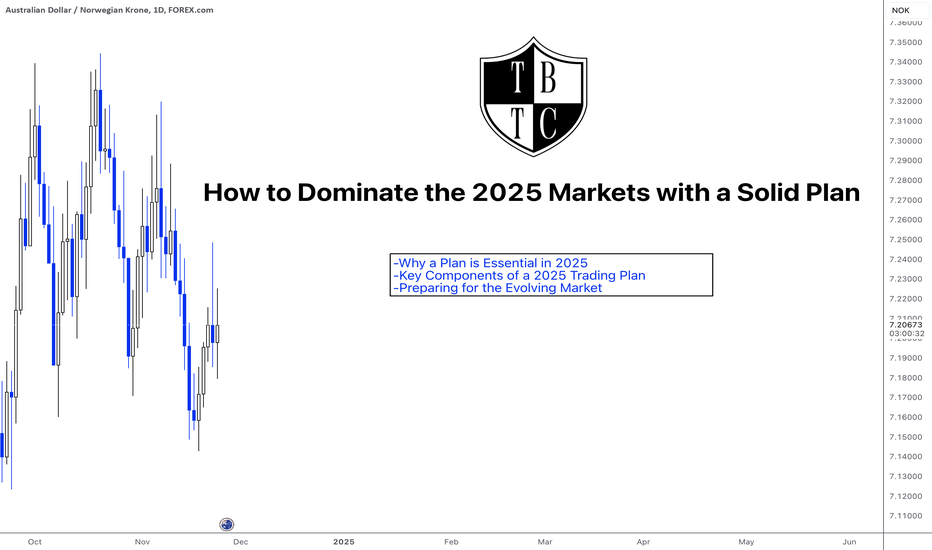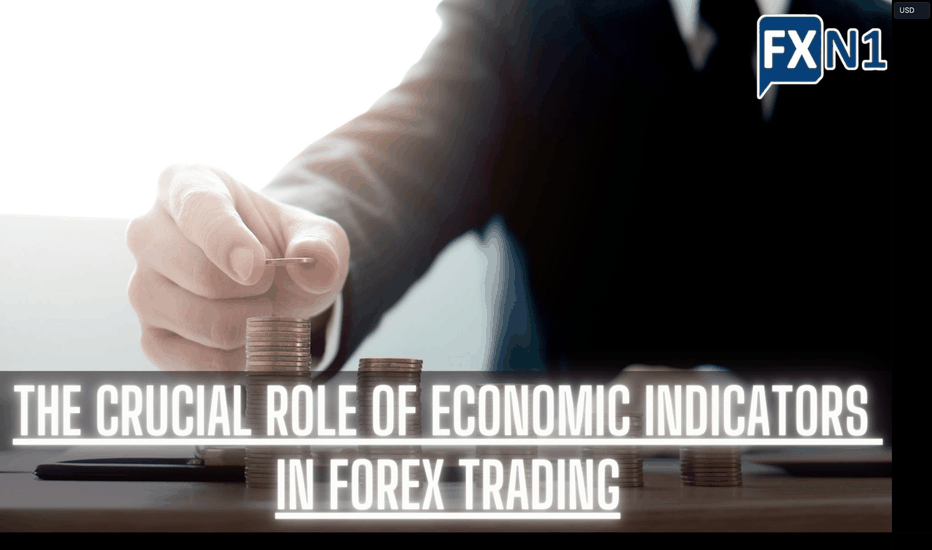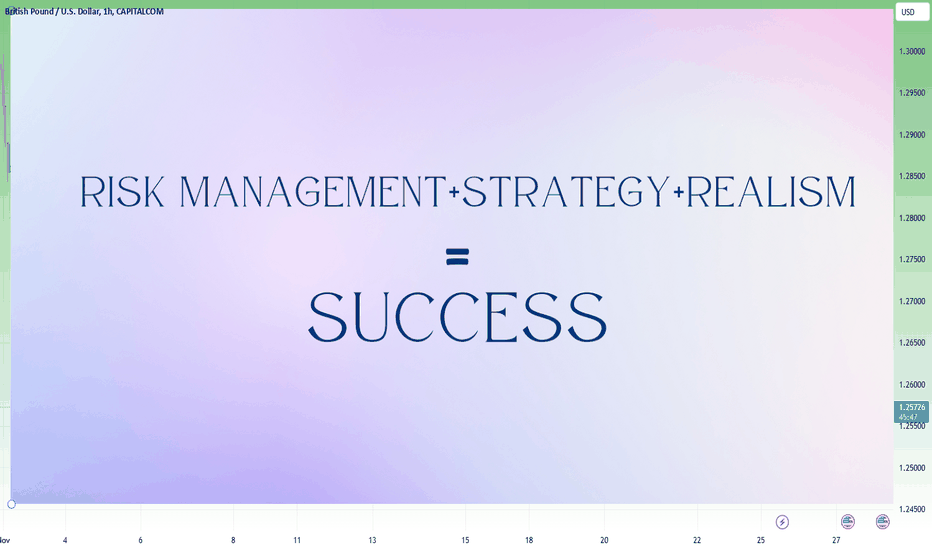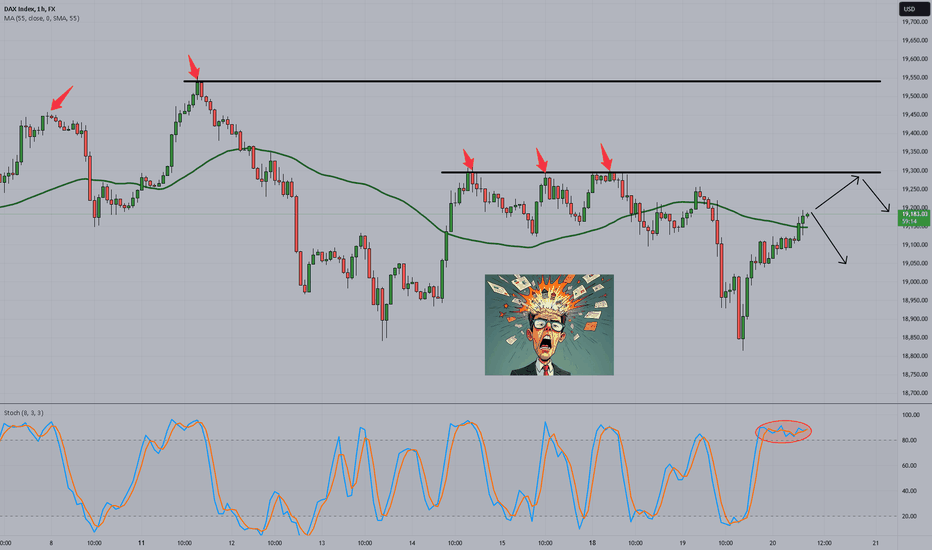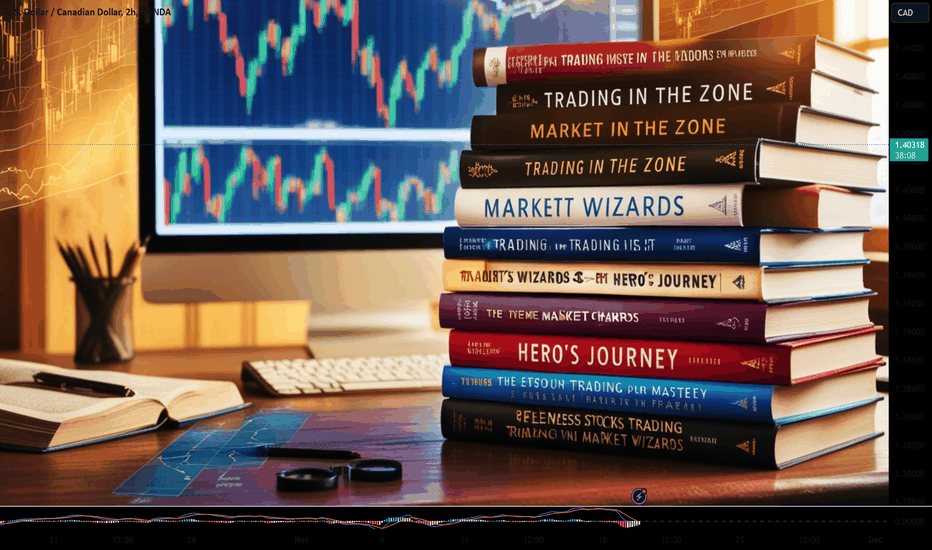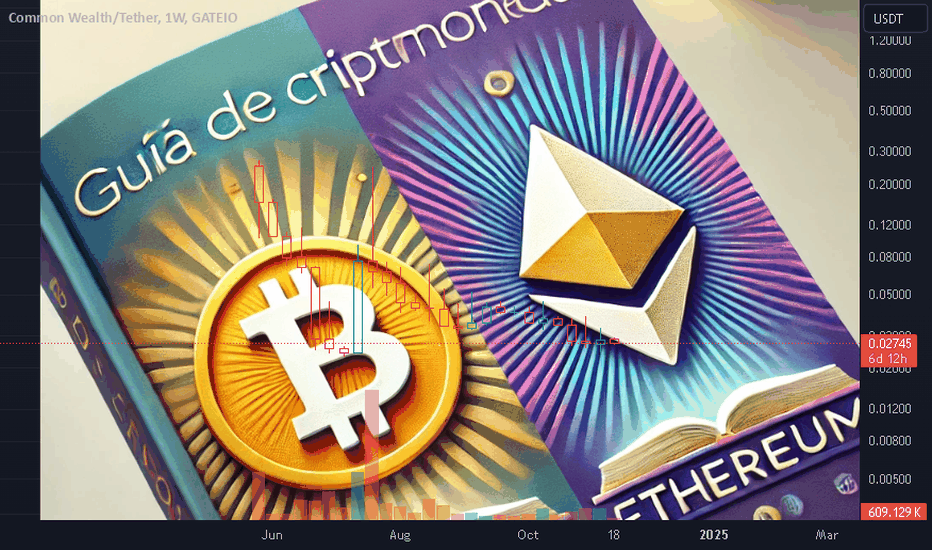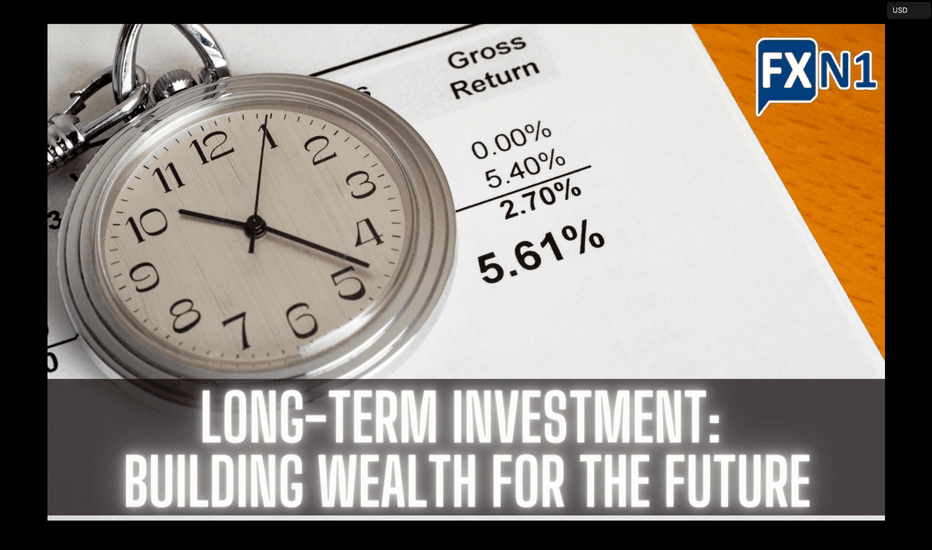Best Lot Size for Scalping Forex For Any Account Size
In this article, I will teach you how to calculate the best fixed lot size for Scalping Forex for any account size in 3 simple steps.
1. Build Up a Trading Watch List
In order to accurately calculate a proper lot size for scalping Forex, you need to know the exact Forex pairs that you trade.
You should create a list of trading currency pairs.
For the sake of the example, imagine that you trade only 4 major USD pairs:
EURUSD, GBPUSD, USDJPY, USDCAD
2. Do Backtesting
Backtest every forex pair in your watch list and find at least 5 trading setups on each pair based on the rules of your trading strategy.
Also, remember that the more setups you will find, the more accurately you will calculate the best lot size for your scalping strategy.
Here are 5 trading setups on EURUSD that meet my entry criteria.
After that, you should calculate a pips value of a stop loss of each trade.
Below, you can see 5 trading setups on GBPUSD pair.
And here are the stop losses of each trade in pips.
Now, USDCAD pair. Again, here are 5 trading setups, meeting the entry rules.
You can see the stop loss of each trade in pips below.
And finally, 5 setups on USDJPY pair.
And here are the stop losses of these trades.
Among these 20 trading setups, you should find the trade with the biggest stop loss.
The biggest stop loss is 15 pips on USDJPY pair.
3. Measure a Lot Size
Open Forex position size calculator.
You can take any free position size calculator that is available.
Fill all the fields.
In currency pair input, the forex pair with the biggest stop loss - USDJPY in our example.
Account currency - your account currency, let's take USD.
Account size - your account size, let's take 10000$.
Risk ratio - that will be the risk % of your trading account per trade, input 1.5%.
Stop Loss - input a pip value of the biggest stop loss that you found - 15 pips.
And click calculate.
That will be the best lot size for scalping Forex with your trading strategy.
The idea is that our maximum loss will not exceed 1.5% of the trading account balance.
While the average risk per trade will be around 1%.
Before you start scalping Forex on a real account, it is very important to know how to properly calculate your risks. Trading with the fixed lot, this technique will help you to calculate the best lot size for your trades.
❤️Please, support my work with like, thank you!❤️
Trading Plan
What is Bitcoin ‘Pairs Trading’? (Example: ETH/BTC)This is for anybody who wants to sell some Bitcoin but is still bullish crypto. 🚀
It’s also if you’re neutral on crypto but think Bitcoin is overvalued vs other tokens.
It’s also just if you’re just interested to see a way to apply a pairs trading strategy .
In case you’ve been hiding under a rock, Bitcoin just broke over $100k - No more waiting for the HODLRS!!
Naturally after hitting this massive milestone, some traders are going to be thinking about taking profits. And if they’re thinking it, some of them are going to be doing it.
But let’s forget about selling for a moment, are you really buying more BTC when it just hit $100k and it's up ~150% this year?
So even if there is not more active selling interest, there’s probably less buying interest.
I think you’d be mad (or very brave) to bet against Bitcoin. BUT
Are these scenarios possible?
Bitcoin trades sideways for a while after hitting $100k
Alt season kicks in and other cryptos play catchup
If you think yes to at least one of these, my team and me have been looking at a pairs trade
What is pairs trading?
Pairs trading in crypto is a market-neutral trading strategy that involves taking a long position in one cryptocurrency and a short position in another, based on the assumption that their historical price relationship will revert to the mean.
The point is to profit from the relative price movement between the two assets, i.e. not the absolute ups or downs of one asset like Bitcoin.
ETH/BTC
I put this crypto pair this way around - I’m not sure if you’re meant to - it just kind of reminds me of EUR/USD in forex trading.
So as a reminder, ETH/BTC is Ethereum’s token Ether priced in Bitcoin. When Ether outperforms Bitcoin it goes up and when Ether underperforms Bitcoin, it goes down.
So it doesn’t actually matter if Bitcoin goes up, down or sideways, if you’re trading ETH/BTC - what matters is what one does relative to the other.
Well this thing has been going down a lot! Until recently.
Going back to the idea of pairs trading - the thesis here is that the Ethererum/Bitcoin price ratio has dropped to bargain levels and could be about to recover.
I’m not going to lie to you - there are a lot of sore hands out there from trying to catch this falling knife!
But this rebound off the 61.8% Fibonacci retracement of the 2020-21 rally has caught our attention.
Dropping to the daily chart, can you see how 0.4000 has acted like a magnet to the price both from above and below?
0.4 is our line in the sand for long positions.
Equally, our risk is well defined in this setup. A drop back under the 61.8% Fib level around 0.32 means the idea isn’t working and it's time to get out and let Bitcoin do its thing!
How to trade it
Specific entries and exits depend on your personal risk tolerance, but broadly there are THREE methods here:
1. Crypto-to-Crypto Spot Trading
Trade ETH directly for BTC (or vice versa) on a cryptocurrency exchange. This is straightforward and involves holding the actual assets.
2. CFD Trading (Contracts for Difference)
Speculate on ETH/BTC price movements using CFDs without owning the underlying cryptocurrencies. This allows for leverage and the ability to short-sell.
3. Spread Trading
Buy ETH and simultaneously short BTC (or vice versa) with equal dollar value to profit from their relative price movement while minimizing exposure to overall market trends.
But that’s just how we are seeing things?
Do you think this is bananas, or could we be onto something?
Please let us know in the comments
Cheers!
Jasper. Chief Market Analyst, Trading Writers
GANN TRADING LESSON - TIME IS MORE IMPORTANT THAN PRICETIME IS MORE IMPORTANT THAN PRICE: The Astrological Perspective Behind Gann’s Methodology
When William Delbert Gann emphasized that TIME is more important than PRICE, he was tapping into something much deeper than conventional market analysis. While many traders focus on price movements alone, Gann understood that the market operates in astronomical cycles, where TIME governs much more than just price fluctuations. Astrology—particularly the positions and movements of celestial bodies—played a pivotal role in shaping his market predictions.
In this lesson, I’ll explain how TIME, as influenced by astrology, is crucial to understanding market movements. These cycles, when understood properly, offer predictive power far beyond just analysing price levels.
Astrological Influence on Time:
1. Planetary Cycles and Market Behavior:
Gann didn’t just rely on conventional time intervals or geometric patterns. He utilized planetary alignments and aspects (the angular relationship between planets) to time his market entries and exits. Astrology is a tool that provides insights into the cycles of energy that influence all aspects of life, including financial markets.
- Saturn’s Influence: Saturn governs structure, discipline, and long-term cycles. Gann recognized Saturn’s influence in the market's periodic retracements and consolidations. Understanding the Saturn cycle (approximately 29.5 years) can offer insight into long-term market trends and reversals.
- Jupiter’s Influence: Jupiter represents expansion and growth. Its cycles (around 12 years) highlight moments of market optimism and bullish phases. A conjunction or favorable aspect of Jupiter can signal market rallies.
- Mars and Venus: The positions and aspects of Mars (action, aggression) and Venus (value, attraction) provide insights into the market’s volatility and emotional impulses. These planetary movements help explain rapid market changes, both bullish and bearish.
2.Timing the Market with Planetary Transits:
A planetary transit occurs when a planet moves over significant points in a chart, influencing market behavior. Gann was able to calculate how these planetary transits affected market cycles, and he applied this knowledge to forecast market turning points.
- Mercury Retrograde: Gann was particularly attentive to Mercury retrograde periods, as these can disrupt market communication and create confusion. Traders often see slowdowns or reversals during these phases. Gann applied Mercury’s influence to identify market retracements and reversals.
- Lunar Cycles: The Moon, with its 28-day cycle, affects emotions and market sentiment. Gann considered the lunar phases—new moons and full moons—as critical turning points in the market. The waxing and waning of the Moon corresponds to periods of growth and decline.
3. Astrological Timing in Market Cycles:
One of the most powerful tools in Gann’s approach was understanding the relationship between planetary positions and market movements. By using astrological charts, Gann identified perfect alignments of planets that coincided with price action on the market. For example, a planetary conjunction could signal the start of a new market cycle, while a planetary opposition might indicate a peak or bottom.
- Planetary Aspects: Key aspects between planets, such as conjunctions, squares, and oppositions, signal moments of market tension or harmony. These moments coincide with sharp price movements, either breakouts or reversals.
- The 360-Degree Cycle: Gann's deep study of planetary harmonics showed that the 360-degree cycle used in astrology is mirrored in the market. He mapped out specific points in the market based on the planetary cycles and their corresponding aspects to price levels.
Astrology in Practice: How Time and Celestial Events Shape Market Movements:
1. Astrological Alignment with Market Events:
- I look for planetary alignments that occur near key market highs and lows. These alignments give me an exact timing window for potential market changes. For example, Mars square Pluto often brings about periods of intense volatility, which could signal a sharp price movement in either direction.
2. Using Lunar Phases for Predictive Power:
- During new moons or full moons, I adjust my timing strategies. These phases, when aligned with market cycles, help me anticipate turning points. I make trade decisions based on these phases, particularly when a new moon or full moon coincides with significant planetary aspects.
3. Timing Market Entries Based on Planetary Cycles:
- I don’t focus solely on price levels but rather on timing. For example, during a Jupiter-Saturn aspect, I may take a longer-term position as this phase suggests growth after a period of contraction. Conversely, when planets like Saturn or Pluto are forming harsh angles, I may expect a correction or a trend reversal.
4. Calculating Time Cycles Based on Astrology:
- The math and geometry behind Gann’s teachings are intricately linked to the celestial bodies. Using astrological charts, I can pinpoint exact time frames when market changes are most likely to happen. The orbital periods of the planets are key to this predictive analysis.
Conclusion: Integrating Time and Astrology for Precision in Trading:
By understanding time cycles through an astrological lens, I’ve unlocked a deeper level of market prediction. The key takeaway is that the market doesn’t move randomly — it’s influenced by celestial cycles, and timing these cycles accurately can provide you with a predictive edge. Gann’s methods of combining advanced mathematics, sacred geometry, and astrology allow us to predict market highs, lows, and turning points with precision.
Once you master the art of reading astrological cycles and apply them to your trading, you can move from being a reactive trader to a predictive one, capturing market movements before they happen. This is where the true power of TIME comes into play, as it becomes the ultimate tool for successful trading.
The Role of Meditation in Navigating the Forex MarketThe forex market, recognized as the largest financial market globally, operates around the clock, enabling traders to engage in currency exchange with a staggering daily trading volume exceeding $6 trillion. While the opportunities for profit are immense, the market's complexities can overwhelm many novice traders, leading to significant losses. This article highlights how meditation can serve as a crucial tool for traders looking to cultivate a more disciplined and resilient approach to trading.
Understanding the Challenges in Forex Trading
Many traders enter the forex market with the hope of quick gains but soon discover the numerous pitfalls that can hinder their success. Common challenges include:
1. Lack of Education and Understanding: Many are drawn to forex without grasping essential concepts, resulting in costly mistakes. A solid foundation in fundamental and technical analysis is critical for navigating the market successfully.
2. Poor Risk Management: Effective risk management is key to preserving capital. Traders often expose themselves to excessive risk through overleveraging, neglecting stop-loss orders, or focusing on a single currency pair.
3. Emotional Trading: Emotional responses like fear, greed, and impatience can cloud judgment, leading to impulsive decisions that stray from well-considered trading plans.
4. Lack of Trading Discipline: Success in forex requires adherence to a structured strategy, yet many traders falter by chasing losses or overtrading.
5. Unrealistic Expectations: The allure of immediate profits can create unrealistic expectations, causing frustration when outcomes do not meet anticipations.
Read also:
The Beneficial Role of Meditation
Amidst these challenges, meditation emerges as a valuable practice for traders looking to enhance their mental fortitude and emotional resilience. Here's how it can help:
1. Enhanced Focus and Clarity: Meditation practices, such as mindfulness, enable traders to cultivate a state of heightened awareness. This clarity allows them to analyze market conditions objectively, helping to reduce impulsive trading driven by emotional responses.
2. Improved Emotional Regulation: Regular meditation can provide traders with tools to manage anxiety, fear, and impatience. By fostering a sense of calm, traders can approach the market with a balanced mindset, making decisions rooted in strategy rather than emotion.
3. Cultivation of Patience and Discipline: Meditation teaches the value of patience and self-discipline. By engaging in focused breathing or guided mindfulness exercises, traders can reinforce their commitment to adhering to their trading plans and strategies, even in volatile market conditions.
4. Stress Reduction: The forex market can be a high-pressure environment. Meditation acts as an antidote to stress, helping traders maintain composure and clarity when facing market fluctuations.
5. Increased Self-Awareness: Meditation fosters introspection, enabling traders to reflect on their behaviors and decisions. This self-awareness can highlight patterns of emotional trading and reinforce the importance of following their trading discipline.
Read also:
Implementing Meditation into Daily Trading Routines
To effectively incorporate meditation into a trading routine, consider the following steps:
1. Set Aside Regular Time for Meditation: Allocate a specific time each day, perhaps before trading, to engage in meditation. Even just 10-15 minutes can provide a significant benefit.
2. Find a Comfortable Space: Choose a quiet and comfortable environment free from distractions. This can be anywhere in your home or even a serene outdoor space if possible.
3. Explore Various Techniques: Experiment with different forms of meditation, such as guided meditations, breathing exercises, or mindfulness practices, to find what resonates best with you.
4. Practice Deep Breathing: In moments of stress or anxiety while trading, take a moment to pause and practice deep breathing. This can ground your thoughts and help you regain focus.
5. Reflect on Your Trading Journal: After your meditation session, consider reflecting on your trading experiences and decisions. Journaling can complement your meditation practice by helping you process your thoughts and emotions.
Read Also:
Conclusion
The forex market presents unique challenges that can lead to losses for many traders. However, by integrating meditation into their routines, traders can enhance their mental resilience, emotional control, and overall trading performance. Emphasizing education, risk management, and disciplined strategies is essential, but these efforts can be significantly bolstered through the practice of meditation. By fostering a calm and focused mindset, traders can navigate the complexities of the forex market with greater confidence and increased chances of success.
Drummond Geometry - Introduction to Time Frames in TradingDrummond Geometry emphasizes the importance of understanding and utilizing multiple time frames for trading. It outlines that higher time periods (HTP) provide critical directional context, while lower time periods (LTP) offer granular confirmation and entry/exit signals. This interplay allows traders to align their trades with the broader market structure while timing their actions effectively. For example, strong resistance in the HTP might signal a downtrend in the LTP, guiding shorter-term trading strategies within a defined market context.
Trading Idea Based on Time Frames:
Strategy: Higher Time Frame Support/Resistance Alignment
1. Objective : Trade in the direction indicated by the higher time period while fine-tuning entries and exits using the lower time period.
2. Setup :
- Identify strong support or resistance in the higher time period (e.g., daily or weekly charts).
- Confirm the trend's alignment in the lower time period (e.g., hourly or 15-minute charts) by observing price movement or the behavior of key levels like PL Dots.
3. Execution :
- Enter trades on the LTP when it confirms the HTP direction (e.g., breakout of a lower time resistance in an uptrend supported by the HTP).
- Exit trades when the LTP shows reversal signals or approaches a critical HTP level.
This method ensures alignment with the market's broader context while allowing for precision in execution.
The Top Ten Money Habits Every Trader Should EmbraceSuccess in trading is more than just making strategic entry and exit decisions; it demands a holistic approach that encompasses effective profit realization, diligent capital protection, and a nuanced understanding of the psychological challenges posed by money. Many traders, especially novices, overlook these critical aspects, which can impede their journey to achieving full potential. By cultivating robust money habits, traders can sidestep common pitfalls and enhance their trading practices from haphazard speculation driven by luck to a disciplined methodology that enhances the chances of success over time.
Positive money habits function like the gears in a well-oiled machine. They help traders manage stress and maintain focus in the face of market volatility, enabling them to adhere to their strategies rather than succumbing to impulsive actions. In this article, we explore ten key money habits that successful traders embrace.
1. Conservatively Allocate Your Net Worth to Trading
In the realm of retail trading, the importance of a cautious approach to capital allocation cannot be overstated. New traders should consider investing only a small percentage of their total net worth into their trading accounts. This strategy serves several purposes, the foremost being financial preservation. When stakes are relatively low, the emotional impact of inevitable losses diminishes, allowing for greater objectivity and composure. This approach helps traders manage their mental resources, which are just as critical as financial capital, by minimizing the emotional stress associated with fluctuating account balances.
2. Limit Per-Trade Risk
The 1% rule is a cornerstone of sound risk management, advising traders to commit no more than 1% of their total capital to a single trade. Adhering to this guideline is essential for maintaining stability and consistency within one’s trading operations. Small, manageable losses preserve trading capital and serve as a buffer against the emotional turmoil that larger losses can cause. By keeping losses minimal, traders can maintain emotional balance and avoid engaging in destructive behaviors such as overtrading or deviating from their established strategies.
3. Implement Stop-Loss Orders
Stop-loss orders are a vital risk management tool that dictates a pre-established exit point for trades that begin to lose value. When conditions turn unfavorable, these orders automatically limit losses, transforming small setbacks into manageable situations, which prevents catastrophic financial consequences. By setting stop-loss orders, traders can detach from the emotional weight of each trade, reducing the temptation to react impulsively. Much like a life jacket keeps you afloat in turbulent waters, stop-loss orders protect traders from significant loss during market storms.
Read Also:
4. Know When to Stop Trading
Establishing a clear boundary for when to cease trading is essential to maintaining emotional health and discipline. Whether it’s after two consecutive losses or reaching a predetermined percentage of capital loss, these self-imposed limits serve as crucial safeguards against emotional decision-making and impulsive reactions to market shifts. Avoiding the trap of "chasing losses" is vital for long-term survival, as relentless attempts to recover lost funds can lead to reckless trading behavior.
Read Also:
5. Maintain Accurate Records to Understand Your Performance
Successful traders often keep a detailed trading journal to track their history of trades and analyze performance metrics. Regularly assessing key statistics—such as win/loss ratios, average trade sizes, and recurring mistakes—enables traders to identify patterns and areas for improvement. This diligent record-keeping allows for data-driven decision-making and objective assessments, facilitating strategic adjustments based on performance rather than emotion. In essence, a trading journal becomes more than a record; it transforms into an essential tool for growth and competitive advantage.
Read Also:
6. Keep Trading Capital Separate from Personal Finances
A fundamental principle for serious traders is to maintain a clear separation between trading funds and personal finances. This involves designating a specific amount of capital exclusively for trading, shielding everyday finances from the volatility that can arise in the markets. Treating trading as a business with its own financial structure fosters discipline and enables traders to navigate market fluctuations without compromising essential personal expenses, such as rent or family obligations.
7. Develop Emotional Control
Successful trading is deeply rooted in emotional discipline. This trait differentiates a professional trader from an amateur gambler. Those capable of regulating their emotions can execute their trading plans with confidence, resisting the lure of impulsive, fear-driven decisions. Regular self-evaluation and mindfulness techniques contribute to emotional resilience, fostering a mindset that prioritizes strategic processes over short-term returns. Practicing emotional control enhances consistency and ultimately serves as a pillar of long-term success.
Read Also:
8. Cultivate Patience for Sustainable Capital Growth
Patience is a valuable asset in the trading world. Success is often achieved incrementally, necessitating a disciplined and sustained approach to trading rather than a frantic dash for immediate profits. By adhering to risk management principles and avoiding over-leverage, traders can gradually build their accounts, acknowledging that success is a marathon, not a sprint. Impatience can lead to hasty decisions that undermine a trader’s strategy, while a patient, methodical approach allows for the powerful compounding of gains over time.
9. Maintain Balance Beyond Trading
It’s crucial for traders to remember that their self-worth should not solely depend on their trading outcomes. An inherent risk exists when traders overly identify with their trading performance, potentially clouding judgment and fueling emotional volatility. Fostering a balanced lifestyle that includes varied interests helps mitigate the effects of trading fluctuations on overall well-being. This broader perspective can help traders remain level-headed, ensuring that their mood and decision-making processes are not solely influenced by trading results.
10. Establish an Emergency Fund for Financial Security
Finally, traders should prioritize building an emergency fund covering several months’ worth of living expenses. This safety net provides mental clarity and reduces the pressure that arises from needing consistent trading income. The unpredictable nature of trading can lead to significant financial stress, making it essential to separate one’s day-to-day financial needs from trading outcomes. With an emergency fund in place, traders can focus on making rational decisions without the looming pressure of immediate financial obligations.
Conclusion
In summary, successful trading transcends the mechanics of market entry and exit; it encompasses a comprehensive approach to profit realization, capital protection, and psychological resilience. By adopting sound money habits, whether you are an experienced trader or just starting, you can enhance your trading methodology and significantly improve your chances for long-term success. These strategies, from prudent capital allocation to emotional discipline, form the backbone of a resilient trading practice. Ultimately, cultivating these habits transforms trading from a game of chance into a systematic, strategic endeavor, paving the way for consistent profitability over time.
✅ Please share your thoughts about this educational post in the comments section below and HIT LIKE if you appreciate! Don't forget to FOLLOW ME; you will help us a lot with this small contribution
Why Day Traders Act Like Drake but Need Kendrick’s DisciplineDay traders are a lot like Drake: flashy, quick to make moves, and often living for the moment. They’re chasing the thrill of the next trade, celebrating their wins like hit singles, and always looking for the next big opportunity. But here’s the reality: while Drake’s charm works for the music charts, traders need something more if they want to succeed long-term. They need Kendrick Lamar’s discipline.
Kendrick’s artistry is meticulous, thoughtful, and built for longevity. He’s not dropping tracks every week to chase clout—he’s crafting albums that stand the test of time. Traders can learn a lot from that approach. Trading isn’t about scoring a single big win; it’s about building consistency, managing risk, and sticking to a plan.
Here’s how you channel your inner Kendrick:
Stay Humble, Stay Grounded – Don’t let one winning trade inflate your ego. Remember, the market is always the real star.
Think Long-Term – Focus on strategies that build your portfolio steadily over time, rather than trying to hit a jackpot every day.
Master the Basics – Like Kendrick perfects his craft, you need to master your entries, exits, and risk management to create lasting success.
Final Thought:
Are you trading like Drake—seeking the spotlight—or like Kendrick, crafting a legacy? Let’s discuss how you can shift your mindset and elevate your trading game. Drop your thoughts below!
FOMO: The Trader’s Silent Enemy and How to Defeat ItIn the world of trading, emotional influences can significantly impact decision-making and outcomes. Two contrasting profiles emerge: those shadowed by Fear of Missing Out (FOMO) and those who adhere to disciplined trading practices. Understanding these profiles can help traders navigate the often volatile and unpredictable landscape of financial markets.
Distinctions Between FOMO and Disciplined Traders
The fundamental differences between traders influenced by FOMO and their disciplined counterparts can be distilled into several critical areas:
Research and Due Diligence
Disciplined Trader: A disciplined trader approaches the market with caution, dedicating time to comprehensive research before making any trades. They analyze market trends, harness technical indicators, and assess the fundamentals of the assets they are considering.
FOMO Trader: In stark contrast, the FOMO trader tends to act impulsively, often entering trades based solely on a recent surge in an asset's price. This lack of due diligence can lead to poor decision-making and significant financial losses.
Psychological Well-being
Disciplined Trader: The peace of mind that comes from preparation and understanding fosters resilience. Disciplined traders possess a clear vision of their strategies, which translates into greater emotional stability during market fluctuations.
FOMO Trader: Conversely, FOMO traders live in a constant state of anxiety, driven by the fear of missing out on potential profits. This stress can cloud their judgment, resulting in hasty decisions that may not align with their long-term goals.
Read Also:
Setting Expectations
Disciplined Trader: Traders with discipline recognize that markets fluctuate, and they set realistic expectations for their trades. They understand that no asset will rise indefinitely and prepare themselves for potential downturns.
FOMO Trader: FOMO traders may harbor unrealistic expectations of perpetual price increases, often leading to poor risk management and reactions based on emotional impulses rather than careful analysis.
Additionally, disciplined traders maintain structured practices, such as keeping a trading journal and employing risk management strategies, including stop-loss and take-profit orders, to safeguard their investments.
The Psychological Origins of FOMO in Trading
FOMO is not simply a passing feeling; it is deeply rooted in psychological and emotional dynamics that affect traders' behaviors. Here are a few of the significant psychological components that fuel FOMO:
Emotional Drivers
- Fear: At its core, FOMO is driven by the fear of missing out on lucrative opportunities. This fear leads to impulsive decision-making without adequate analysis.
- Greed: The promise of quick gains can lead to overconfidence, where traders disregard their due diligence processes in favor of immediate rewards.
- Anxiety: Market volatility heightens anxiety, driving traders to act hastily out of fear of being left behind as prices surge.
- Jealousy: Observing others' success can cultivate feelings of jealousy, which may compel traders to chase performance without conducting their own assessments.
- Impatience: Many FOMO traders are eager for instant gratification, resulting in rushed trading decisions that may not align with their overall strategy.
Read Also:
External Influences
- Market Hype: The buzz surrounding trending assets—often amplified by social media and news platforms—creates urgency among traders to partake, regardless of personal conviction.
- Herd Behavior: Sensational news can trigger a collective rush to join in on trending trades, leading to exaggerated market movements and increased volatility.
- Cognitive Biases: Psychological biases, such as loss aversion and confirmation bias, can exacerbate FOMO, pushing traders to act on emotions rather than logic.
Strategies to Combat FOMO in Trading
Recognizing and overcoming FOMO is paramount for successful trading. Implementing the following strategies can help cultivate a disciplined mindset:
1. Craft a Thorough Trading Plan
A well-defined trading plan outlines clear entry and exit strategies, risk parameters, and criteria for asset selection. By establishing this framework early in your trading endeavors, you create a disciplined approach that minimizes the chances of impulsive decisions.
2. Utilize a Trading Checklist
Create a comprehensive checklist that evaluates various conditions and technical indicators before executing a trade. This practice encourages thorough research and analysis, helping to prevent hasty, emotionally-driven decisions.
3. Maintain a Trading Journal
Documenting each trade helps identify patterns in decision-making and allows for reflection on the motivations behind your trades. Analyzing past experiences can empower you to make more informed choices moving forward.
4. Develop a Consistent Trading Routine
Establishing a structured routine—whether it involves regular analysis or adhering to a specific sequence for trade execution—helps maintain discipline and reinforces a systematic trading approach.
5. Implement Risk Management Tools
Utilizing tools such as stop-loss orders aids in controlling the emotional toll of trading. These measures automatically mitigate losses and preserve capital, supporting a rational decision-making framework.
Read Also:
Final Thoughts: Building Resilience in Trading
Understanding the dynamics behind FOMO provides traders with important insights into their psychological triggers. The emotional roots of FOMO—shaped by fear, social influence, and psychological biases—underline the critical importance of maintaining a disciplined trading approach. By implementing structured strategies, such as creating a trading plan, utilizing checklists, maintaining journals, and employing risk management, traders can better navigate the complexities of financial markets. Ultimately, cultivating resilience against FOMO allows for more informed and confident decision-making, leading to long-term success in trading endeavors.
✅ Please share your thoughts about this educational post in the comments section below and HIT LIKE if you appreciate! Don't forget to FOLLOW ME; you will help us a lot with this small contribution
The Trader’s Hero’s Journey: Becoming Your Own Trading LegendThe life of a trader often feels like a rollercoaster—full of challenges, triumphs, and personal growth.
As I read The Hero’s Journey by Joseph Campbell, it struck me that trading follows a similar arc to the mythical journey of a hero. It’s a path of discovery, trials, and transformation, where the ultimate prize isn’t just financial success but self-mastery."
Joseph Campbell’s The Hero’s Journey outlines a universal story arc where a hero ventures into the unknown, faces trials, and emerges transformed. When I reflect on my journey as a trader—and the journeys of many others I’ve met—I see clear parallels.
Trading is not just about profits or losses; it’s about the personal evolution that comes with navigating the markets. Let’s break it down.
1. The Call to Adventure
Every trader begins with a moment of inspiration: perhaps it’s seeing others succeed, hearing about financial freedom, or wanting to take control of their destiny. This is the call to adventure, where you step into the unknown world of trading.
Trading Insight: This initial excitement often leads to a steep learning curve. You dive into books, courses, and strategies, ready to conquer the markets. But as Campbell reminds us, the journey isn’t as simple as answering the call—it’s only the beginning.
2. Crossing the Threshold
The moment you place your first trade, you cross the threshold into the real world of trading. Here, the safety of learning gives way to the reality of risk, uncertainty, and the emotional rollercoaster that trading brings.
Trading Insight: This step is thrilling but also daunting. Many traders experience beginner’s luck, only to be hit by the harsh realities of losses and market unpredictability. It’s the first step into the unknown, where the real journey begins.
3. The Trials and Challenges
In The Hero’s Journey, the hero faces trials, tests, and challenges that push them to their limits. For traders, these trials come in the form of losses, emotional turmoil, and the constant temptation to deviate from their plans.
Trading Insight: Every trader faces these moments—revenge trading after a loss, abandoning a strategy, or letting fear and greed take over. These are the tests that separate those who persevere from those who give up. Each challenge is an opportunity to grow, learn, and refine your skills.
4. The Mentor
In every hero’s journey, a mentor appears to guide the hero through their trials. For traders, mentors can take many forms: books, courses, communities, or even market experiences themselves.
Trading Insight: A good mentor—or even the wisdom of past experiences—provides clarity during tough times. They help you stay disciplined, manage risk, and stick to your trading plan. Many traders find mentorship in unlikely places, like mistakes that teach them lessons they’ll never forget.
5. The Abyss (Dark Night of the Soul)
Every hero reaches a point of despair, where they’re tested to their breaking point. For traders, this might look like a string of losses, a blown account, or doubting whether they’re cut out for the markets at all.
Trading Insight: This is the hardest part of the journey. Many traders quit here, feeling overwhelmed and defeated. But those who persist, reflect, and adapt often emerge stronger and wiser. The abyss is not the end—it’s the turning point.
6. The Transformation
After surviving the abyss, the hero is transformed. For traders, this is the point where you develop emotional resilience, refine your strategies, and truly understand the importance of discipline and risk management.
Trading Insight: You begin to trust your process, stick to your plan, and let go of the need to control the market. This transformation doesn’t happen overnight, but when it does, you become a confident, consistent trader.
7. The Return with the Elixir
In the final stage of The Hero’s Journey, the hero returns to their world with the “elixir,” the wisdom and rewards gained from their trials. For traders, this could be consistent profitability, but more importantly, it’s the lessons learned and the personal growth achieved.
Trading Insight: You return not just as a trader but as someone who understands themselves better. The elixir isn’t just financial—it’s the knowledge that success comes from within, from mastering your emotions and staying disciplined.
Conclusion:
Trading is more than just buying and selling—it’s a hero’s journey. It’s a path of self-discovery, resilience, and transformation. As Campbell reminds us, the greatest reward isn’t the treasure at the end but the person you become along the way.
Whether you’re just starting out or have been trading for years, remember: every challenge you face is part of your journey. Embrace it. Learn from it. And like every hero, you’ll emerge stronger, wiser, and ready to conquer the markets—and yourself.
How is your journey going ?
How to recover after a losing streakEven the most seasoned traders—those with decades of experience—encounter losing streaks. These periods can feel discouraging and lead to emotional turbulence that affects decision-making. However, with the right psychological tools, strategies, and perspective, you can regain confidence and emerge stronger. Here’s a comprehensive guide to help you navigate this challenging but normal phase of trading.
Psychological Strategies for Regaining Confidence
Acknowledge and Accept Losses
Losing is part of the trading process. Shifting your mindset to view losses as an inevitable part of a long-term strategy can alleviate emotional distress. Experienced traders understand that no strategy guarantees constant wins, and a losing streak doesn’t necessarily mean the strategy is broken.
Step Back and Reassess
When emotions run high after a streak of losses, taking a break is crucial. This pause helps clear your mind, prevent revenge trading, and allows for a fresh perspective. Activities like walking, meditating, or engaging in hobbies can reset your mindset.
Reframe Losses as Learning Opportunities
Use each loss as a tool for growth. Analyze what went wrong—was it the market conditions, your strategy, or emotional decisions? This practice not only helps refine your approach but also rebuilds your confidence through proactive learning.
Visualize Success and Practice Mindfulness
Visualization and mindfulness techniques can help reset your emotional responses to losses. For instance, imagine handling losses calmly or achieving small trading wins. These exercises reprogram your brain to maintain composure under stress.
Reconnect with Your Trading Plan
Revisit your trading strategy to ensure it aligns with your goals and market conditions. A solid, well-tested plan provides psychological assurance and reduces impulsivity during challenging times.
Practical and Tactical Adjustments
Analyze Your Trading Journal
A detailed trading journal is invaluable. It helps you identify patterns in your decisions and pinpoint areas for improvement. For example, are you losing because of emotional entries or overly aggressive position sizes? Journaling fosters accountability and structured recovery.
Trade Smaller Positions
During a losing streak, reduce the size of your trades. Smaller stakes lower emotional pressure and give you room to rebuild confidence through minor wins. A series of small successes can gradually restore your self-belief.
Refine Risk Management
Effective risk management is a cornerstone of consistent trading. Stick to a risk-per-trade limit (commonly 1–2% of your portfolio) and set clear stop-loss orders. These practices minimize damage during downturns and maintain a manageable equity curve.
Adjust Expectations
Recognize that trading success is about probabilities over a series of trades, not individual outcomes. This perspective helps alleviate the emotional weight of single losses and reinforces a focus on long-term performance.
Seek Community Support
Trading can feel isolating, especially during tough times. Engage with mentors, join trading groups, or connect with peers who’ve experienced similar challenges. Sharing experiences can provide valuable insights and emotional support.
The Bigger Picture: Confidence is a Process
Recovering confidence isn’t about eliminating losses; it’s about cultivating resilience. By focusing on disciplined practices, psychological fortitude, and incremental adjustments, you’ll find yourself not only recovering but improving as a trader. Remember, even after 20 years in the markets, encountering losing streaks is part of the journey. What sets successful traders apart is their ability to handle setbacks with composure, adaptability, and a commitment to growth.
A Risk Tolerance Test for All TradersRisk Tolerance trips up more traders than any other emotional aspect of trading stocks, or any other asset class. How is your risk tolerance? Would you say that you have a good stable risk tolerance? Or is it the main reason you take small gains or losses?
If you need help evaluating your risk tolerance, take this Risk Tolerance Test . If any of these apply, then there is a problem you need to address:
Do you get stopped out of trades and then watch as the stock moves up? This is caused by setting stops too tightly for the kind of trading style being used.
Do you panic as the stock retraces and lower the stop loss to avoid getting stopped out? This actually increases risk rather than lowering it.
Do you raise your stop loss before the stock forms a new consolidation for support? This also increases risk rather than lessening it. There is higher risk that you will get stopped out prematurely.
Do you check profit or loss everyday on your held stocks? Position traders should only be checking their balance once a month. Swing traders could wait for the end of the month but can do it weekly.
Are you a swing trader who checks your positions intraday to see what is happening? This runs the risk of reacting prematurely to intraday volatility that eventually evens out.
Have you given up on using stop losses because "they don't work"? You probably just need to learn a better method for placing stop losses.
Do you hold and hold with no stop loss, watching a stock tumble, unable to exit and ultimately exiting too late or "holding long term" instead? This is a chronic problem among retail traders that indicates the lack of a complete trading plan, one that provides a plan for when your holdings go against your intent.
To keep your risk tolerance in check try adding these simple steps to your trade analysis:
Carefully check the Risk to Reward ratio of your picks, and only trade stocks with a good probability for profit vs. loss.
Consider the amount of money at risk in each trade. Think about how you would feel if you lost that money should the trade go against you. Add this parameter to your trading rules.
Lower overall market risk by trading more than one or two stocks at a time. Spread your capital outlay over a few picks rather than putting it all on one trade.
Use stop losses on every trade. Place stops under the appropriate support levels for the chart patterns and your intent.
If you are a Swing Trader, it is important to enter trades only on strong market days. Not every flat day is a good day to swing trade. You'll keep more of your profits over time if you wait for ideal days and picks.
The simplest way to improve risk tolerance is to continually paper trade on a Simulator even after you've started trading live. Most beginners do not practice executing their trading plan sufficiently before jumping into the market. They allow emotion to cloud better judgment and let greed overwhelm decisions. Trading is the only business where normally calm, intelligent, and wise people do really greedy things that end up being foolish and risky. And it all comes down to the emotions that come with money, especially fear, greed and pride.
Traders have one thing to compete against and that is their own emotions, which can cause poor decisions. My best advice for all traders is this: compete against your own prior trading history to improve results, and ignore what is going on with everyone else.
Summary:
Emotional control comes from having a sound plan, sticking with it, and not changing it because the market has moved on a whim or some guy on social just made a lot of money. Create your trading style, which is a plan of attack for the market. Set out your strategies and use the correct ones for the current Market Condition. Only trade stocks that have a risk factor you can live with. Use stop losses appropriately, and you will be successful. Problems occur somewhere in all of this, when traders miss a step and deviate from the plan.
When you feel emotions getting out of hand, controlling your trading decisions, consider the above checklists for help evaluating and adjusting your mindset. Greed is a tough emotion to control, because it is insidious and hard to identify in ourselves. Fear is easy to identify and much easier to control or harness. A certain amount of fear is necessary and good in the market, because it keeps individuals from taking too much risk. However, fear that dominates daily emotional energy only creates constant losses. Think about this and study prior trades. If they performed well after being stopped out, then there is a risk problem to address in your trading plan.
Aligning Your Personality With Your Trading StyleAs a trader, I've learned the significance of aligning trading strategies with my unique personality, current vibe and risk tolerance. Here's why it matters:
1️⃣ Understanding Yourself: Embracing self-awareness is the first step to successful trading. I identify my strengths, weaknesses, risk appetite, and emotional responses to market movements.
2️⃣ Emotion & Discipline: By aligning my trading approach with my personality, I stay disciplined during turbulent times and avoid making emotional decisions that hinder success.
3️⃣ Timeframes & Trading Styles: I choose trading timeframes and styles that suit my personality and vibe best. Whether I thrive in short-term scalping or prefer patient swing trading, aligning with my natural tendencies enhances performance. I find that also being able to adapt to my changing schedules and even moods is part of what makes this so important. For example, I am more relaxed while on holiday thus short term swinging matches my vibe much more than aggressive scalping or day trading during those time periods... but when motivated and on a work binge, I prefer shorter term trading.
4️⃣ Risk Tolerance & Position Sizing: My risk tolerance guides position sizing and the level of exposure I'm comfortable with. This ensures a balanced portfolio that doesn't cause undue stress. Zen trading, baby.
5️⃣ Consistency & Confidence: Aligning with my trading personality fosters consistency in my decision-making process. This consistency builds confidence in my strategies and reduces second-guessing. This is key when applying an edge and trading in probabilities.
6️⃣ Patience vs. Action: Some traders excel at waiting for the perfect setups, while others are more proactive. I embrace my natural inclinations, knowing that patience can be just as rewarding as taking action.
7️⃣ Learning & Adaptation: Understanding my trading personality allows me to focus on areas that need improvement and adapt my strategies accordingly. Continuous learning is the key to growth.
Trading personality alignment isn't a one-size-fits-all approach. By embracing who I am as a trader, I unlock my true potential, making more informed decisions, and ultimately achieving consistent profitability. 📊💪
The Importance of Measuring Trading Performance with "R"In today’s fast-paced trading environment, having an effective and clear method to track performance is essential for success. This article is tailored for short-term traders who typically manage 1–3 positions at a time and are looking for practical strategies to evaluate their trading outcomes. Unlike diversified stock portfolios or hedge funds that deal with long-term asset management, this guide focuses on the everyday realities of prop and retail traders.
Not everyone will agree with the concepts I discuss in this article, but this is how I track trading performance and how many other successful retail and prop traders track theirs. This is what I do, and it’s what I suggest. Let’s explore why tracking performance in terms of dollars risked versus dollars gained—using a metric called “R”—is a superior method compared to traditional measures like percentages or pips.
Why Percentages and Pips Fall Short
Most trading blogs and forums emphasize percentage or pip returns, but these metrics don’t tell the full story. Every trader operates under unique circumstances, influenced by their account size, risk tolerance, and trading style. A trader managing $1,000 doesn’t face the same challenges as one handling $100,000. For this reason, dollar-based performance tracking, specifically through “R,” provides a more accurate and relevant measure of trading effectiveness.
What is “R” and Why Does It Matter?
“R” is a measure of your risk-to-reward ratio across all trades. It reflects how much you make relative to how much you risk. For example:
If you gain $100,000 in a year and lose $50,000, your R-value is 2R ($100,000 ÷ $50,000).
A 2R track record means you’re making $2 for every $1 you lose, while a 3R track record means $3 for every $1 lost.
A solid R-value is a strong indicator of trading proficiency. It provides a quick, meaningful snapshot of performance, and investors or prop firms evaluating your track record will prioritize this metric. A high R-value demonstrates effective risk management and profitability.
Percent Risk vs. Fixed Dollar Risk
Risking a percentage of your account, such as 2% per trade, is a popular strategy but isn’t ideal for short-term traders. While it works well for diversified portfolios or hedge funds managing multiple assets, short-term traders focusing on a few positions should prioritize fixed-dollar risk. Here’s why:
Relevance: A 100% gain on a $300 account isn’t as significant as a 50% gain on a $10,000 account. Dollar gains give a clearer picture of actual performance.
Leverage: Forex trading allows traders to control large positions with smaller deposits. A trader with $1,000 and one with $10,000 can both manage similar position sizes due to leverage, making percentage returns less relevant.
The “Pillow Test”: Your ability to sleep at night often determines how much risk you’re truly comfortable with. For instance:
With a $1,000 account, risking 2%—$20—might feel inconsequential, comparable to the price of two beers and a pizza in some countries. This could lead a trader to feel comfortable risking 5% or even 10%.
However, with a $100,000 account, risking 10%—$10,000—might be enough to keep you awake at night. For most traders, myself included, this level of risk is intolerable.
This example highlights the limitations of percentage-based models. They fail to account for individual perceptions of money and risk. Dollar-based risk management and the R-value system, by contrast, adapt to the trader's mindset and circumstances.
Why Account Balances Can Be Misleading
Account balances don’t necessarily reflect a trader’s true trading capital. Many professional traders keep a minimal amount in their trading accounts and maintain the rest in safer, in a bank account or even in long term investments.
For example, a trader might control a 100k position with just $5000 in their trading account, but this does not mean that 5k is all their capital.
This strategy minimizes risk while leveraging the power of Forex trading.
Avoiding the Pitfall of Tying Up Capital
There’s no need to keep all your trading capital in one account. Thanks to leverage, traders can manage large positions with smaller deposits. Successful traders often withdraw profits monthly, maintaining a predetermined account balance and reallocating funds to other investments or savings. This approach underscores the irrelevance of account size in tracking performance. What truly matters is your dollar risk per trade and your overall R-value.
The Personal Nature of Risk Tolerance
Every trader has a unique risk tolerance shaped by their experience, confidence, and financial situation. A seasoned trader comfortable with their edge might take larger risks than a beginner. This variability further emphasizes the importance of measuring performance through R-values. Instead of comparing percentages or pips, traders can focus on their individual risk-reward balance and optimize their strategy accordingly.
Ultimately, risk tolerance is deeply personal. For some, losing a few hundred dollars on a small account feels negligible, but for others, the same few hundred, even if the account is considerably larger may become emotionally and psychologically taxing. This is why measuring returns in terms of dollars risked versus dollars gained is more practical and relevant.
Calculating Your R-Value: A Practical Example
Let’s break it down with a simple example:
Number of trades: 20
Fixed risk per trade: (amount varies by trader)
Winning trades: 9 (45%)
Losing trades: 11 (55%)
Gains: 33R
Losses: 11R
Overall R-value: 3R (33 ÷ 11)
This means that for every dollar risked, the trader earned $3 on average. Notably, the trader had more losing trades than winning ones but still achieved profitability due to effective risk-reward management.
Final Thoughts: The Power of “R”
Measuring trading performance in terms of R provides a comprehensive and meaningful view of your effectiveness as a trader. It transcends the limitations of percentages and pips, accounts for individual differences in risk tolerance, and aligns with the realities of leveraged trading. By adopting this approach, traders can better track their progress, refine their strategies, and present a compelling case to potential investors or prop firms.
Education: How to Dominate the 2025 Markets with a Solid PlanAs the world hurtles toward 2025, the financial landscape is poised for both opportunities and challenges. For traders, investors, and business owners alike, the key to success is not simply reacting to market movements, but proactively creating a solid plan that allows you to dominate whatever the markets throw your way.
Today, we’ll break down the core elements of a strategy that will not only help you survive but thrive in the coming year. It’s time to stop guessing and start planning.
1. Understand the Big Picture
The first step to dominating the 2025 markets is understanding the macroeconomic forces shaping them. In 2025, we’ll still see the effects of post-pandemic recovery, shifts in global trade, and technological innovations that will change how we interact with financial markets. But there are other things on the horizon too—potential interest rate hikes, geopolitical tensions, and emerging market dynamics that can influence everything from commodities to currencies.
If you want to play the markets effectively, you need to get ahead of these trends, rather than reacting to them. You can’t predict every move, but by staying informed on what’s going on globally, you’ll be better prepared to make moves when the market presents opportunities.
Practical Tip:
Set aside time each week to catch up on world events, economic reports, and financial news. This gives you the context you need to make decisions beyond just looking at your charts.
2. Master Your Trading Psychology
A successful trading plan in 2025 won’t just be about technical setups or market conditions—it will depend largely on your mindset. As traders, we all face the emotional rollercoaster of drawdowns, missed opportunities, and the temptation to break our own rules. This is where a solid psychological foundation can make or break your success.
Having the right mindset means understanding that losses are part of the process and not an indicator of failure. You must embrace discipline, patience, and emotional control. The real key to dominating the market is sticking to your plan when things aren’t going well, not abandoning it at the first sign of trouble.
Practical Tip:
Use tools like TradingView’s alert system to stay detached from the screen and avoid emotional overtrading. This can help you focus on your long-term strategy and prevent impulsive decisions during high-pressure moments.
3. Leverage the Power of Backtesting and Data Analysis
By 2025, data is more powerful than ever. Whether you’re trading stocks, forex, or crypto, having access to historical data allows you to backtest your strategies and refine them based on actual performance rather than guesswork. Backtesting helps you determine if your strategy has been profitable under various market conditions—taking the guesswork out of your trading decisions.
Think of backtesting as practice before the real game. It’s like running drills before a big match, and it’s absolutely essential if you’re serious about dominating the market. When you know that a strategy works in various conditions, you can confidently execute it when the time comes.
Practical Tip:
Use platforms like TradingView or MetaTrader to backtest your strategies using historical data. Look for patterns, analyze risk-to-reward ratios, and refine your entry and exit criteria.
4. Refine Your Risk Management
A solid risk management plan will separate you from the pack in 2025. Market conditions will be volatile, and having a solid framework for controlling risk is critical to surviving and thriving. The best traders are not the ones who make the most money on each trade—they are the ones who manage their losses effectively.
This means setting stop-loss orders, only risking a small percentage of your capital on each trade, and having clear guidelines on position sizing. A well-structured risk management strategy ensures that you can weather periods of drawdown without blowing your account.
Practical Tip:
Decide upfront how much you’re willing to risk on each trade (usually no more than 1-2% of your capital), and set your stop-loss orders accordingly. Even if a trade goes against you, your account will survive and thrive in the long run.
5. Adapt to Emerging Market Trends
The market in 2025 will be shaped by more than just traditional assets like stocks, bonds, and forex. The rise of cryptocurrencies, advancements in AI and machine learning, and innovations in fintech will play an increasingly important role in the way we invest and trade.
While you don’t need to be an expert in every new trend, it’s important to stay agile and keep your finger on the pulse of emerging opportunities. The traders who adapt first to new markets, whether it’s cryptocurrencies, NFTs, or AI-driven investment strategies, are the ones who stand to gain the most.
Practical Tip:
Start exploring new markets now, even if you're not ready to trade them yet. Get familiar with the technologies, projects, and coins that are emerging. This gives you a head start in identifying potential profitable opportunities in 2025.
6. Create a Daily Routine and Stick to It
Success in trading and investing isn’t about working 12-hour days—it’s about consistency. The traders who consistently succeed are the ones who develop a daily routine and stick to it. Your routine should include time for market analysis, backtesting, reviewing your trades, and staying updated on economic news.
A daily routine keeps you grounded and ensures you are constantly improving your skills while managing your trades with a calm and clear mind. The moment you start skipping steps, rushing through your plan, or making impulsive decisions, you're more likely to miss important opportunities or make unnecessary mistakes.
Practical Tip:
Create a trading checklist that you follow every day. This could include checking the economic calendar, reviewing your previous trades, performing technical analysis, and setting alerts for key levels. By following this routine, you ensure that you're always prepared and never caught off guard.
Final Thought: Your Plan, Your Success
The key to dominating the markets in 2025 is not about hoping for luck or predicting the future—it’s about having a solid plan, mastering your mindset, and executing consistently. If you follow the steps outlined here, you’ll be well-positioned to navigate whatever challenges the market throws your way and come out on top.
But here’s the thing: plans are nothing without action. It’s time to stop reading about success and start implementing these strategies. You know the risks. You know the challenges. Now, are you ready to dominate the 2025 markets? Let me know what strategies you're planning to implement, and how you’re preparing for the coming year! Your thoughts could make all the difference.
The Crucial Role of Economic Indicators in Forex TradingIn the bustling world of forex trading, many traders unfortunately fall prey to the misconception of disregarding economic indicators. This oversight carries significant risk, as factors such as interest rates, inflation, and various economic metrics have a profound influence on currency values. By neglecting these essential data points, traders may encounter considerable losses and miss out on lucrative opportunities.
Research indicates that traders who disregard economic indicators are more than twice as likely to experience unexpected market downturns. While technical analysis often garners more attention, grasping the significance of major economic metrics is equally vital. These indicators offer a broader understanding of a nation's economic health, guiding trading decisions and helping mitigate potential pitfalls. Ignoring them makes one susceptible to market unpredictability and financial setbacks.
The Importance of Being Informed in Forex Trading
In the ever-evolving forex landscape, currency values fluctuate in response to global economic events. Economic indicators such as interest rates, inflation rates, and employment statistics are instrumental in highlighting a country's economic performance and foreseeing potential currency shifts. Failing to consider these indicators amplifies market risks, resulting in hasty decisions and erratic trading outcomes.
This article aims to emphasize the necessity of incorporating economic indicators into your trading strategy for sustained success.
Decoding Economic Indicators
Economic indicators are numerical statistics that provide insights into a country’s economic health. These figures cover various aspects of economic activities and help traders predict currency trends. By monitoring key metrics like inflation and employment rates, forex traders can gain a clearer perspective on a nation’s economic outlook, allowing for more informed trading choices.
Key economic indicators every forex trader should be aware of include:
- Gross Domestic Product (GDP): This measures the total production of goods and services in a nation. A rising GDP typically signals a strengthening currency, while a falling GDP may suggest economic decline, leading to a weaker currency.
- Inflation Rate: This indicates how quickly prices are increasing in an economy. Central banks often adjust interest rates to manage inflation. High inflation can lead to interest rate hikes, which tend to strengthen the currency, while low inflation can prompt rate cuts and weaken the currency.
- Interest Rates: Central banks manipulate interest rates to stabilize the economy and control inflation. Higher interest rates can attract foreign capital, boosting the currency’s value, while lower rates can have a devaluing effect.
- Unemployment Rate: High unemployment is often a telltale sign of economic distress and can lead to depreciation of the currency. Conversely, low unemployment suggests a robust economy and can positively impact the currency’s value.
- Trade Balance: This metric reflects the difference between a country's exports and imports. A positive trade balance strengthens the currency, while a negative balance can weaken it.
Understanding these indicators can empower traders by offering insights into market movements. For instance, if inflation rises sharply, traders can anticipate potential interest rate hikes, influencing their trading strategies.
Integrating Economic Indicators into Forex Analysis
Fundamental analysis in forex revolves around understanding the economic elements that drive currency markets, with economic indicators forming its core. These indicators assist traders in predicting market shifts by assessing a country’s economic condition.
For example, an increase in US interest rates generally boosts the dollar against other currencies, while rising inflation in the Eurozone might weaken the euro, presenting traders with opportunities to profit from these oscillations. Moreover, monitoring the sentiment shaped by these economic indicators helps to make decisions grounded in logic rather than emotions, fostering better trading discipline.
The Risks of Disregarding Economic Indicators
Overlooking economic indicators can have drastic repercussions for forex traders, resulting in:
- Poor Decision-Making: Ignoring economic data while relying solely on technical analysis can lead to misinterpretations of market signals and inefficient trade timing.
- Unexpected Market Volatility: Critical reports, like interest rate announcements or labor stats, often trigger sharp market movements. Traders unaware of these upcoming events risk being caught off guard by volatility, leading to potential losses.
- Missed Market Opportunities: Ignoring economic signals means potentially passing up beneficial trading conditions. For example, a surge in GDP or a decrease in unemployment can create favorable scenarios that traders must be ready to exploit.
Incorporating both technical and fundamental analyses into your trading approach is paramount. A solid understanding of economic indicators enhances risk management and profitability.
A Case Study: Economic Indicators' Influence on Forex Markets
A defining moment that underscores the importance of economic indicators occurred during the Brexit referendum in 2016. As the vote approached, many traders overlooked significant economic trends, such as deteriorating consumer confidence and declining GDP growth in the UK, which hinted at impending instability. Following the unexpected "Leave" vote, the British Pound (GBP) plummeted over 10% in just one trading session—the most significant single-day decline in its history.
GBP/USD daily chart showing the Brexit drop in 2016
Traders who closely tracked these economic indicators could have foreseen the heightened volatility, allowing them to adjust their trades effectively. Those who failed to heed the fundamentals faced considerable losses, realizing the vital role economic indicators play in strategic decision-making.
### Strategies to Incorporate Economic Indicators into Your Trading Plan
Harnessing economic indicators for trading success involves practical strategies, including:
- Establishing a Trading Routine: Regularly track the relevant economic indicators for your trading pairs. If you trade the USD, keep an eye on U.S. interest rates, inflation reports, and employment figures. Dedicate time daily or weekly to assess the latest data and incorporate it into your market analysis.
- Utilizing Economic Calendars: Economic calendars are indispensable for forex traders, providing schedules for upcoming reports and events. Leverage these tools to prepare for potential market volatility and adjust your trading strategies accordingly.
- Maintaining Flexibility: The landscape of economic indicators can be unpredictable. External events, such as natural disasters or geopolitical tensions, can disrupt forecasts. Successful traders remain agile, ready to adapt their strategies to evolving situations.
Conclusion: Emphasizing the Importance of Economic Indicators
In forex trading, the consequences of ignoring economic indicators can be dire, leading to avoidable losses and squandered opportunities. These crucial data points are vital for understanding a nation’s economic stability and predicting currency movements. By integrating economic indicators into your trading strategy, you’ll enhance your decision-making and boost your chances for long-term success.
Traders who stay attuned to economic developments and adapt their strategies accordingly will position themselves for greater success in the forex market. Don’t let ignorance hinder your trading journey—start following economic indicators to elevate your trading practice.
✅ Please share your thoughts about this article in the comments section below and HIT LIKE if you appreciate my post. Don't forget to FOLLOW ME; you will help us a lot with this small contribution.
Your Real Chances of Succeeding as a Forex TraderYou’ve probably heard the claim that 95% of traders fail to make money in the markets. This statement is repeated endlessly across the internet, creating fear and doubt for many aspiring traders. However, this widely circulated myth is not backed by solid evidence or reliable statistics. In reality, it’s a generalized assumption based on flawed logic that discourages new traders from reaching their full potential.
Let’s unpack this myth and explore your real chances of succeeding as a Forex trader with a logical, evidence-based discussion. By the end of this, you’ll feel more confident and ready to approach trading with the right mindset.
Understanding Success in Forex Trading
A critical question for any trader is: What are the chances of making consistent profits in Forex without being a full-time professional?
It’s important to recognize that while some traders lose money, others consistently make profits. Consistency over the long term is what separates successful traders from the rest. However, being a “professional” trader is not a prerequisite for success.
The myth that “95% of traders fail” doesn’t mean 95% never make money. Many traders are profitable part-time, focusing on steady growth rather than aiming for professional status right away.
Focus on Realistic Goals
One of the biggest mistakes new traders make is trying to become professional traders too quickly. This approach often leads to overtrading, excessive risk-taking, and emotional decision-making. Instead, your initial goal should be to make consistent profits on a monthly basis.
Start by aiming for profitability each month. Once you achieve this, you can gradually raise your targets—weekly profitability, then scaling up your account and trading frequency. This progression not only builds your skills but also instills the discipline required for long-term success.
Why Realistic Expectations Improve Your Trading
Setting achievable goals gives you an emotional advantage. By not pressuring yourself to become a professional immediately, you reduce the likelihood of over-leveraging or overtrading. Without the emotional burden of relying on trading as your sole income source, you can focus on refining your strategies and improving your decision-making.
When you detach emotionally from your trades and manage risk effectively, you put yourself in a better position to succeed. In fact, statistics show that the percentage of traders who make consistent monthly profits is likely closer to 20-30%, far higher than the often-cited 5%.
The Power of Risk-Reward and Strategy
To succeed in Forex trading, you need to understand risk-reward ratios and develop a high-probability trading edge. Let’s break this down:
Risk-Reward Ratios
A 1:1 risk-reward ratio requires a 50% win rate to break even.
A 1:2 ratio only requires a 33% win rate to break even.
A 1:3 ratio allows you to break even with just a 25% win rate.
The higher your risk-reward ratio, the fewer trades you need to win to stay profitable. This highlights the importance of letting your winning trades outpace your losing ones.
High-Probability Trading Edge
A sound strategy, like price action trading, increases your chances of making profitable trades.
Random entries will likely result in break-even performance, but combining a solid strategy with effective risk-reward management shifts the odds in your favor.
Steps to Improve Your Odds of Success
To increase your chances of becoming a successful trader:
Master Risk Management: Understand how to manage your capital effectively to minimize losses.
Learn a Proven Strategy: Focus on mastering a high-probability trading strategy, such as price action.
Set Realistic Goals: Aim for consistent monthly profits rather than rushing to become a professional.
Trade Part-Time First: Start small and trade part-time. Over time, scale up as your skills and account balance grow.
Focus on Quality, Not Quantity: Trade less but aim for higher-quality setups.
Final Thoughts
Becoming a profitable trader is not unattainable. By setting realistic goals and avoiding the pressure to go full-time too quickly, you greatly increase your chances of success. Start by mastering a strategy like price action trading and combine it with disciplined money management.
Success in Forex trading comes from within—it’s about controlling emotions, managing risks, and having a solid plan. If you focus on trading part-time with consistency, you’ll be surprised at how quickly your trading can turn profitable.
Take it step by step, and remember: the journey to success in Forex trading is a marathon, not a sprint.
Avoid Financial Disaster: Master Portfolio Protection.Safeguarding your portfolio is as critical as the pursuit of growth. While the excitement of asset appreciation draws many into the investing world, the reality is that market fluctuations can pose significant threats to even the most meticulously devised plans. Portfolio protection strategies exist to shield your assets against the inevitable risks inherent in financial markets, allowing you to endure turbulent economic seasons without incurring substantial losses. Whether you're an experienced investor or a newcomer, the significance of effective risk management cannot be overstated.
Markets are known for their volatility, often reflecting shifts in economic conditions, political events, and societal sentiments. A downturn can erase years of gains in a matter of moments if protective measures are lacking. Therefore, constructing a robust portfolio demanding attention to diversification, risk management techniques, and strategic asset allocation is paramount. The aim of these strategies is not the complete avoidance of risk but rather the mitigation of its potential impact, ensuring that your investment trajectory remains stable over time.
The Importance of Portfolio Protection for Lasting Success
In today’s fast-paced investment landscape, prioritizing long-term protection strategies is crucial for sustained financial success. While opportunities abound, they often come hand-in-hand with unexpected downturns, economic turmoil, or global crises that could significantly hinder wealth accumulation. During distressing market conditions, stock prices may experience extreme volatility, leading to potentially disastrous outcomes for investors who lack robust protective measures.
The consequences of failing to implement adequate protection can be catastrophic. Severe market corrections can rapidly erase gains, forcing investors to either sell at a loss or make hasty, emotional decisions. This knee-jerk reaction can create a cycle of mismanagement, further amplifying losses and jeopardizing long-term financial objectives. In stark contrast, those who incorporate strategies designed to protect against market downturns can maintain composure during turmoil, effectively safeguarding their investments while positioning themselves for recovery as conditions improve.
Preserving capital during unpredictable phases is not merely about avoiding losses; it is about fostering resilience. By minimizing risk exposure, investors enhance their ability to bounce back from setbacks and continue on their path toward growth. Techniques such as diversification, strategic asset allocation, and hedging help create a safety net during tumultuous times. For example, a diversified portfolio that encompasses bonds, commodities, and international assets offers a buffer against losses when one sector falters.
Key Strategies for Portfolio Protection
For an investment portfolio to withstand the inevitable ups and downs of the market, implementing a suite of protection strategies is essential. Here are several methods that can help minimize risks and optimize long-term growth potential:
1. Diversification Across Asset Classes
At its core, diversification is a fundamental strategy for risk management. By allocating investments across various asset classes—such as stocks, bonds, real estate, and commodities—investors can mitigate overall risk. The rationale behind this approach is straightforward: when one asset class struggles, others may thrive, balancing the portfolio's performance.
For instance, in a bearish equity market, bonds or real estate may exhibit stability or even appreciate, cushioning the blow from declining stocks. A well-crafted diversification strategy not only fortifies against losses but also creates opportunities for steady returns. An effectively diversified portfolio reduces vulnerability by distributing risk across a spectrum of investments, a critical aspect of portfolio protection.
2. Hedging with Derivatives
Hedging is a powerful technique that allows investors to guard against financial market volatility using derivatives like options and futures. For example, purchasing put options on a stock provides a safety net, giving investors the right to sell at a specified price and limiting potential losses.
While hedging does not obliterate risk, it functions as insurance, softening the impact of adverse market movements. This strategic approach requires a deep understanding of financial instruments, but when applied correctly, it can significantly bolster portfolio resilience.
3. Incorporating Defensive Investments
During economic instability and market downturns, defensive investments or safe-haven assets come into play. These assets typically retain their value, providing stability in the face of broader market declines. Sectors such as healthcare, utilities, and consumer staples represent defensive stocks that generate consistent revenue regardless of economic conditions.
Furthermore, assets like gold and government bonds are renowned for their stability during turbulent times. Gold often appreciates as stock markets decline, serving as a hedge against inflation and currency depreciation. Government bonds offer a reliable income stream, making them low-risk investments during periods of uncertainty. Incorporating these defensive strategies enhances an investor's ability to manage risk effectively.
4. Regular Portfolio Review and Rebalancing
Maintaining an optimal risk level requires regular portfolio assessments and adjustments aligned with financial goals. As market dynamics evolve, certain assets may outperform or underperform, disrupting the initial asset allocation and potentially amplifying risk.
To counter this, investors should conduct routine rebalancing—selling portions of outperforming assets and reallocating proceeds into underperforming or lower-risk investments. This process helps restore the intended asset mix and ensures adherence to overall financial objectives, promoting stability within the portfolio.
Advanced Portfolio Protection Techniques
For seasoned investors, advanced protection tactics can provide deeper layers of security against market fluctuations. These strategies extend beyond conventional diversification, utilizing sophisticated financial instruments and techniques tailored for effective risk management.
1 - Portfolio Insurance
This technique merges equities with protective puts to limit potential losses. By holding onto stocks while acquiring put options, investors cap their downside risk while still allowing for participation in market gains.
2 - Volatility-Based Strategies
Adjusting exposure based on market volatility indicators can also serve as a proactive approach to risk management. For instance, heightened volatility might necessitate reducing equity exposure in favor of low-volatility assets, thereby maintaining manageable risk levels.
3 - Utilizing Swaps and Collars
Swaps can facilitate the exchange of investment risks, providing flexibility for managing exposure to market fluctuations. A collar strategy, conversely, combines purchasing a put with selling a call option, creating a protective range that limits both potential losses and profit. These advanced tactics suit investors seeking tailored risk solutions.
Common Pitfalls in Portfolio Protection
Despite the necessity of safety strategies, several missteps can undermine their efficacy. Recognizing these errors is crucial for maintaining a resilient portfolio.
1 - Over-Diversification
While diversification is vital, over-diversifying can dilute returns and complicate portfolio management. An unmanageable number of small investments may also escalate fees and expenses unnecessarily.
2 - Neglecting Market Conditions
Failing to adjust portfolios in response to fluctuating economic or geopolitical climates can expose investors to heightened risks. Consistent reevaluation is essential to keep portfolios aligned with prevailing market trends and personal objectives.
3 - Overtraditional Reliance on One Strategy
Dependence on a singular protective measure—be it Stop Loss orders or a single hedge—can be detrimental. Instead, employing a multifaceted approach that integrates various strategies enhances systemic resilience to market volatility.
4 - Ignoring Changes in Risk Tolerance
Personal circumstances and market conditions can shift your risk profile, especially as significant life milestones approach. Neglecting to recalibrate asset allocation in light of these extrinsic factors can lead to increased vulnerability during downturns.
Being aware of these common pitfalls will enhance your ability to protect your investments and pursue long-term financial goals with confidence.
Conclusion
Establishing a resilient portfolio necessitates a strategic approach to safeguarding your investments. In a world filled with uncertainties, deploying effective portfolio protection strategies remains essential for navigating market volatility. Techniques from diversification to hedging to the utilization of advanced instruments serve to fortify your investments against sudden declines while ensuring the potential for sustainable growth.
The journey toward financial success thrives on a commitment to ongoing investment monitoring and a willingness to adapt as conditions change. By implementing a blend of protective strategies—regular rebalancing, investment in safe havens, and employing sophisticated tools—you can cultivate a durable portfolio equipped to weather economic fluctuations. Remember, protecting your investment portfolio is not simply a reactive task, but an evolving commitment aligned with your financial aspirations and the inherent uncertainties of the marketplace.
Strategies for Managing Cognitive OverloadCognitive load significantly affects decision-making in trading. When traders face overwhelming amounts of data, analysis paralysis or rushed decisions can lead to suboptimal outcomes. To thrive in high-pressure environments, it’s vital to manage cognitive overload effectively. Below, I’ll break down actionable strategies for understanding and mitigating cognitive load's impact on trading.
1️⃣ Understand Cognitive Load and Its Impact on Trading
Cognitive load refers to the mental effort required to process information. Trading demands constant attention to market movements, technical analysis, and economic data.
Example: A day trader monitoring more axssets than what they are accustomed to might miss critical patterns due to information overload.
Actionable Tip: Regularly assess how much data you’re consuming. Start with a focus on high-value indicators and gradually expand as you develop familiarity.
2️⃣ Simplify and Automate Your Processes
Over-complexity in trading strategies amplifies cognitive load. Simplify by using predefined rules or more mechanical approaches.
Example: Automated alert systems can signal trades based on algorithms, reducing real-time decision-making stress.
Exercise: Design a checklist for your trading plan. For example: Entry conditions → Risk management → Exit criteria. This minimizes mental effort during live trading.
3️⃣ Develop a Prioritization Framework
Not all information is equally important. Learn to prioritize data relevant to your strategy.
Case Study: A commodities trader focusing on crude oil shouldn’t overanalyze forex movements unless there’s a direct correlation.
Strategy: Use frameworks to categorize information into what’s urgent/important versus secondary noise.
4️⃣ Practice Cognitive Resilience Through Training
Building mental endurance can help you better handle large amounts of information.
Historical Insight: During the 2008 financial crisis, traders with strong mental training adapted quicker, effectively sifting through noise to identify key trends.
Exercise: Engage in activities like brain-training apps or puzzles that enhance your working memory and decision-making capabilities.
5️⃣ Limit Multitasking in High-Stakes Environments
Multitasking might seem efficient but often leads to mistakes in trading. Focus on one task at a time to reduce cognitive interference.
Example: Avoid analyzing new market data while executing a trade, as split attention can result in errors.
Actionable Tip: Block dedicated time for analysis and execution separately. Use a schedule to stay disciplined.
6️⃣ Incorporate Regular Breaks to Reset Focus
Mental fatigue exacerbates cognitive load, making breaks essential to clear your mind.
Example: A forex trader who takes short breaks after every 45 minutes of trading reports improved focus and reduced errors.
Exercise: Implement the 45-15 rule: Trade for 45 minutes, then take a 15-minute break to walk, stretch, or meditate.
7️⃣ Use Visual Aids to Manage Information
Visualizing data helps reduce cognitive strain by presenting complex information in digestible formats.
Example: Heatmaps or charts simplify the evaluation of market trends compared to raw numerical data.
Exercise: Customize your trading dashboard to include only the most relevant visual indicators. This prevents distraction from unnecessary clutter. My students and I use a total market view dashboard and a total news view dashboard.
Cognitive load is a silent yet powerful force in trading psychology. By understanding its impact and adopting strategies to manage it, traders can improve focus, make more objective decisions, and ultimately enhance performance. Start small by prioritizing the most impactful adjustments and scale your efforts as you grow.
From Dreams to Reality: The Untold Struggles of Forex Traders!When entering the world of forex trading, many newcomers envision themselves basking in the sun of a tropical paradise—working only a few hours a day and enjoying financial freedom with minimal effort. This "palm tree fantasy" creates a misleading perception that wealth can be effortlessly acquired through trading. In stark contrast, the road to consistent profitability is fraught with challenges, demanding dedication, strategic planning, and the right mindset. Success in forex isn't about hitting the jackpot overnight; it's about managing risk and developing a sustainable approach. It requires hard work, resilience, and the ability to remain focused amidst the inevitable market chaos.
To transform this fantasy into a reality, new traders must cultivate an understanding of what it truly takes to thrive in forex. Consistency, discipline, and a long-term perspective form the foundation for those who succeed in this fast-paced market. Instead of chasing easy profits, embrace a mindset centered on growth, education, and adaptability.
These are the true hallmarks of successful forex trading.
1 - The Importance of Knowledge and Skill
A commitment to continuous learning and market insight lies at the heart of every successful forex trader. Knowledge is not simply power; it differentiates between triumph and failure in the trading arena. Many traders enter the market with only a superficial understanding, hoping for a few lucky breaks to lead them to financial independence. However, achieving success necessitates a deep comprehension of market dynamics, from economic indicators to technical chart patterns.
Mastering trading requires proficiency in both technical and fundamental analysis, as well as insight into the psychological factors that affect market behavior. Top traders dedicate significant time to honing their skills, studying trends, and adapting to various trading environments. This robust knowledge base not only enables traders to navigate market fluctuations confidently but also fosters long-term growth and resilience. Remember, effective trading is about cultivating the skills and mindset essential for consistent success—not just chasing after quick gains.
2 - Embracing Practical Challenges
While the allure of forex trading lies in its flexibility, the practical realities reveal that it is anything but carefree. Traders must navigate complex market dynamics and appreciate the importance of timing, as forex operates around the clock across multiple global sessions. Understanding the nuances of the different trading sessions—such as those in Asia, Europe, and the US—is crucial for identifying the most opportune moments to trade.
For example, the overlap between the London and New York sessions presents lucrative trading opportunities due to heightened market activity. However, not all traders can be available during these peak hours, which may hinder their effectiveness. Thus, adjusting trading strategies to align with session-specific characteristics becomes essential for maximizing results.
In addition to market dynamics, technology plays a pivotal role in modern trading. Access to reliable trading platforms, real-time data, and automated systems is vital for success. High-quality tools can mean the difference between successfully executing a trade and missing an opportunity due to technical issues. Advanced charting software and trading algorithms facilitate pattern analysis, alerts, and trade automation—but relying solely on technology without comprehending its limitations can lead to costly errors.
Ongoing education about the latest tools and developments in the market is vital. Understanding risk management features, such as Stop Loss and Take Profit orders, along with utilizing backtesting tools to refine strategies, are essential components for navigating the contemporary forex landscape.
3 - Mastering Risk Management and Emotional Control
Effective risk management extends beyond merely capping losses; it’s about safeguarding your capital to ensure longevity in trading. This process starts with setting clear risk parameters for each trade and employing instruments like Stop Loss orders to mitigate unforeseen market fluctuations. Yet, even the most well-laid strategies can falter without emotional fortitude.
The pressures of risk management can test emotional resilience, particularly after losing trades or amidst volatile conditions. Feelings such as fear, greed, and anxiety often push traders to make impulsive decisions, whether that means chasing losses or over-leveraging during a winning streak. This is where emotional control becomes crucial.
Building emotional resilience entails adhering to your trading plan, remaining detached from immediate outcomes, and acknowledging losses as an inherent part of the trading journey. By focusing on long-term objectives rather than short-term fluctuations, you can maintain a level-headed approach, crucial for effective decision-making.
Mastering both risk management and emotional control significantly enhances the likelihood of sustained success. Traders who excel in these areas tend to weather market storms while adhering to their strategies, leading to improved profitability over time.
Actionable Tips for Beginners
Beginning your forex trading journey may feel overwhelming, given the plethora of strategies and information available. However, by anchoring your focus on a few key principles, you can establish a solid foundation for lasting success. The following actionable tips will guide new traders through the complexities of the market while helping you avoid common pitfalls:
1. Develop a Comprehensive Trading Plan: Outline your objectives, risk tolerance, and preferred strategies. A well-defined plan serves as your roadmap and keeps you disciplined, especially when emotions run high. Clearly state your profit targets, acceptable risk per trade, and criteria for entering and exiting trades.
2. Implement Strong Risk Management Practices: Protecting your capital is paramount. As a beginner, limit your risk exposure to 1-2% of your account balance per trade. Always utilize Stop Loss orders to safeguard against significant losses. Avoid over-leveraging, which can amplify both gains and losses, leading to precarious situations.
3. Keep an Eye on Emotional Reactions: Trading’s emotional stresses can be overwhelming, especially during volatile market conditions. Maintain a trading journal to document your trades along with your emotional responses at each decision point. Reviewing this journal regularly helps reveal emotional patterns—such as overconfidence following wins or anxiety after losses—that may cloud your judgment.
4. Stay Informed About Market News: Regularly update yourself on key economic events, policy changes, and geopolitical developments that may influence the forex market. Being aware of these trends enables you to anticipate market movements and adjust your strategies accordingly.
By adhering to these tips, you’ll not only cultivate disciplined trading habits but also shield yourself from common emotional and financial missteps as you lay the groundwork for a successful forex trading career. Remember, in the world of forex, patience and consistency are your greatest allies.
✅ Please share your thoughts about this article in the comments section below and HIT LIKE if you appreciate my post. Don't forget to FOLLOW ME; you will help us a lot with this small contribution.
Top 10 Trading Books Every Trader Must Read (+ 3 Life-Changers)
Trading isn’t just a skill—it’s a journey. Over the last 16 years, I’ve dedicated myself to mastering the markets, learning from both triumphs and setbacks.
Along the way, these books have been invaluable companions, shaping my mindset, refining my strategies, and transforming my approach to trading.
Here’s my curated list of the top 10 trading books I’ve read, plus three bonus gems that offer timeless principles to enrich both your trading and life.
Introduction
Trading is as much about strategy and discipline as it is about understanding markets. The books I’ve read over the years have equipped me with the technical knowledge, psychological tools, and philosophical insights needed to navigate the complexities of trading.
Some taught me to analyze charts and manage risk, others guided me in understanding human behavior, and a few challenged me to see trading as part of a larger personal journey. Here are the must-reads that have made the biggest impact on my trading career.
1. "Reminiscences of a Stock Operator" by Edwin Lefèvre
Why It’s Essential:
This classic tale, inspired by the life of Jesse Livermore, captures the essence of trading psychology, market speculation, and the hard lessons every trader must learn.
Key Takeaways:
Understand Market Sentiment: Trading isn’t just numbers—it’s about understanding crowd psychology.
Patience is a Virtue: Wait for high-probability setups; don’t trade just for the sake of it.
Risk Management: Protecting your capital is as important as making profits.
Learn from Your Losses: Every mistake is a lesson in disguise.
2. "The Market Wizards Collection" by Jack D. Schwager
Why It’s Essential:
This book is a treasure trove of wisdom from some of the most successful traders in history, proving there’s no single formula for success.
Key Takeaways:
Diverse Approaches Work: There’s no one-size-fits-all in trading.
Risk Control is Key: Every great trader has a plan for managing risk.
Traits of Winners: Discipline, focus, and continuous learning are non-negotiable.
Psychology Matters: Master your emotions to master the markets.
3. "Trading in the Zone" by Mark Douglas
Why It’s Essential:
This book transformed the way I approach the mental side of trading, teaching me how to think in probabilities and detach from individual outcomes.
Key Takeaways:
Probabilistic Thinking: Focus on probabilities, not certainties.
Control Your Emotions: Stay calm and composed, no matter the outcome.
Consistency is Everything: Build trust in your process to achieve consistent results.
Detach from Results: Focus on executing your plan, not the outcome of individual trades.
4. "Thinking in Bets" by Annie Duke
Why It’s Essential:
Written by a professional poker player, this book taught me to approach trading as a decision-making game under uncertainty.
Key Takeaways:
Decisions Over Outcomes: Good decisions can still lead to bad results due to chance.
Embrace Uncertainty: Learn to make peace with the unknown.
Learn from Feedback: Use outcomes to refine your process.
Emotion-Free Decision Making: Stay rational, even in high-pressure situations.
5. "Technical Analysis of the Financial Markets" by John J. Murphy
Why It’s Essential:
This comprehensive guide to technical analysis gave me the foundational tools to analyze price action and trends effectively.
Key Takeaways:
Chart Basics: Learn to read and interpret market charts with precision.
Identify Trends: Recognize trends early and ride them for maximum profit.
Indicators and Tools: Master technical tools to enhance your trading edge.
Intermarket Analysis: Understand how different asset classes influence one another.
6. "Trade Your Way to Financial Freedom" by Van K. Tharp
Why It’s Essential:
This book taught me how to build a trading system tailored to my personality and financial goals.
Key Takeaways:
Customized Trading Systems: One size doesn’t fit all.
Position Sizing Matters: Manage risk with strategic position sizing.
Understand Your Psychology: Your mindset directly affects your results.
Evaluate Systems: Use expectancy to measure the effectiveness of your approach.
7. "The Intelligent Investor" by Benjamin Graham
Why It’s Essential:
Though focused on investing, the principles in this book are timeless and applicable to trading, especially the importance of discipline and patience.
Key Takeaways:
Value Matters: Focus on substance, not hype.
Margin of Safety: Always leave room for error.
Long-Term Thinking: Success requires patience and discipline.
Emotions Kill Returns: Stay rational and ignore market noise.
8. "Fooled by Randomness" by Nassim Nicholas Taleb
Why It’s Essential:
This thought-provoking book challenged me to rethink the role of luck and randomness in trading.
Key Takeaways:
Recognize Randomness: Not all outcomes are the result of skill.
Avoid Overconfidence: Understand the limits of your knowledge.
Expect the Unexpected: Prepare for rare, high-impact events.
Humility Wins: Stay grounded, no matter your success.
9. "The Psychology of Trading" by Brett N. Steenbarger
Why It’s Essential:
This book helped me understand how emotions and stress affect trading decisions, and how to manage them.
Key Takeaways:
Emotional Mastery: Use self-awareness to improve decision-making.
Stress Management: Learn techniques to stay calm under pressure.
Behavioral Patterns: Recognize and break harmful habits.
Personal Growth: Continuous improvement is key to long-term success.
10. "The Alchemy of Finance" by George Soros
Why It’s Essential:
This book introduced me to Soros’s theory of reflexivity and inspired me to think critically about market dynamics.
Key Takeaways:
Market Reflexivity: Market participants influence market fundamentals.
Macro Insights: Think big-picture when analyzing markets.
Risk-Taking Philosophy: Be bold but calculated in your trades.
Adaptability is Key: Stay flexible and ready to pivot as markets change.
Bonus Books: Beyond Trading
11. "Think and Grow Rich" by Napoleon Hill
Why It’s Essential:
This timeless classic taught me the power of mindset, goal setting, and persistence in achieving success.
Key Takeaways:
Clarity of Purpose: Define what you want and go after it relentlessly.
Faith in Yourself: Believe in your ability to succeed.
Persistence Pays Off: Never give up, even in the face of adversity.
Positive Thinking: Your thoughts shape your reality.
12. "The Science of Getting Rich" by Wallace D. Wattles
Why It’s Essential:
This foundational text for the law of attraction explains how focused thought and purposeful action can create wealth and success.
Key Takeaways:
Thought Shapes Reality: The book teaches that everything begins with a clear, focused thought. Visualizing success and wealth helps bring them into reality.
Gratitude Multiplies Wealth: Being thankful for what you have opens the door to receiving more.
The Law of Attraction: Align your thoughts and actions with the frequency of abundance to attract wealth.
Creative Thinking Over Competition: Focus on creating value and opportunities instead of competing with others.
Act with Faith and Purpose: Consistently take action while trusting the proces
13. "The Hero’s Journey" by Joseph Campbell (Personal Favorite)
Why It’s Essential:
This book explores the universal story structure that underpins all great adventures and challenges, including the trader’s personal journey.
Key Takeaways:
Understand Your Path: Every trader's journey mirrors the hero's arc—struggles, transformation, and mastery.
Embrace Challenges: Difficulties are part of growth and lead to ultimate success.
Learn from Mentors: Guidance from others can illuminate the path forward.
Transformation Leads to Mastery: The journey itself transforms you into a better, more capable person.
Over 16 years of trading, these books have been my guideposts, offering technical insights, psychological breakthroughs, and inspiration for the journey.
Whether you're just starting out or looking to refine your edge, these reads will give you the tools and mindset to thrive.
Final Thoughts:
Start with One: Pick the book that resonates most with where you are now.
Take Action: Apply the lessons to your trading and mindset immediately.
Commit to Growth: Trading isn’t just a profession; it’s a personal evolution.
These books have shaped my trading and life. I hope they inspire you to achieve your own success and thrive in every aspect of your journey.
Cryptocurrency Trading Beginner's Guide 2The key differences between Bitcoin and Ethereum lie in their purpose, operation, and technological characteristics. Below, I detail the main differences between the two largest cryptocurrencies in terms of market capitalization:
1. Purpose and Objective
Bitcoin (BTC):
Creation: Launched in 2009 by Satoshi Nakamoto.
Objective: Bitcoin was created primarily as a decentralized alternative to traditional money, serving as a store of value and medium of exchange. Its purpose is to act as "digital money" and as an option against fiat currencies controlled by governments and central banks. Its main function is to serve as an alternative to the depreciation of fiat currencies over time (dollar, euro).
Ethereum (ETH):
Creation: Launched in 2015 by Vitalik Buterin.
Objective: Ethereum was designed as a platform for smart contracts and decentralized applications (dApps), in addition to being a cryptocurrency. Although Ethereum can be used as a means of payment, its main focus is to be a flexible platform for developing applications on the blockchain. Some of its major innovations to date include DeFi and NFTs.
2. Technology and Functionality
Bitcoin:
Blockchain: Bitcoin's blockchain is primarily designed to record value transactions and maintain a decentralized and secure system for transferring BTC.
Smart Contracts: Bitcoin is not designed to execute complex smart contracts, as its scripting language is limited in functionality to preserve security and simplicity.
Ethereum:
Blockchain: Ethereum has a more flexible blockchain, designed to allow the creation and execution of smart contracts and dApps. This makes it an ecosystem where developers can build decentralized applications.
Smart Contracts: One of Ethereum's main features is its ability to support smart contracts, which are programs that automatically execute when certain conditions are met.
3. Consensus and Mining
Bitcoin:
Consensus Mechanism: Bitcoin uses a consensus mechanism known as Proof of Work (PoW), which requires miners to solve complex mathematical problems to validate transactions and secure the network.
Energy Consumption: Bitcoin mining requires a large amount of energy due to the PoW process.
Ethereum:
Consensus Mechanism: Ethereum initially also used Proof of Work (PoW) but completed the transition to Proof of Stake (PoS) in 2022 with the Ethereum 2.0 upgrade, making the transaction validation process more energy-efficient.
Energy Consumption: The Proof of Stake model significantly reduces energy consumption compared to Bitcoin.
4. Transaction Speed and Scalability
Bitcoin:
Speed: Bitcoin has an average block time of 10 minutes, meaning transactions can take longer to confirm.
Scalability: Bitcoin faces scalability issues, as it can process between 3 and 7 transactions per second (TPS), leading to the creation of layer 2 scaling solutions like the Lightning Network.
Ethereum:
Speed: Ethereum has a block time of approximately 12 to 15 seconds, allowing transactions to be confirmed faster.
Scalability: Ethereum also faces scalability issues, but the transition to Ethereum 2.0 and the adoption of layer 2 solutions like Optimism and Arbitrum aim to improve its processing capacity.
5. Coin Supply
Bitcoin:
Limited Supply: Bitcoin has a maximum supply of 21 million coins. This is part of Bitcoin's design to create scarcity and maintain its value over time.
Ethereum:
Unlimited Supply: Unlike Bitcoin, Ethereum does not have a maximum issuance limit, although the issuance model has changed with updates like EIP-1559, which introduces a mechanism to "burn" transaction fees.
6. Main Use
Bitcoin:
Primary Use: Mainly used as a store of value (similar to digital gold) and as a medium of exchange, especially for international transfers or as protection against inflation and the depreciation of the dollar.
Ethereum:
Primary Use: Ethereum is used both as a currency and as a platform for developing smart contracts, NFTs (non-fungible tokens), and dApps (decentralized applications), making it a cornerstone of the DeFi (Decentralized Finance) ecosystem.
7. Community and Development
Bitcoin:
Slow Development: Bitcoin follows a conservative approach regarding updates, prioritizing security and stability over new features or rapid changes.
Ethereum:
Active Development: Ethereum has a very active development community and is regularly updated with new functionalities, such as the transition to PoS and improvements in scalability and performance.
Summary of Differences:
Bitcoin is a cryptocurrency primarily focused on being a store of value and a secure, decentralized medium of exchange.
Ethereum is a more versatile platform designed for smart contracts and decentralized applications, with its cryptocurrency, ETH, being a key part in executing these functions.
Both are fundamental in the cryptocurrency space but have very different approaches and purposes.
I hope this is valuable for you!
If you liked it, support me with a like!
If you want to learn more, follow me!
If you didn't like it, I welcome criticisms or comments!
Less is Better: The Importance of Quality Over Quantity.Throughout my journey as an independent trader, I've discovered an essential truth: whether I'm scalping on a five-minute chart for DJ30 or engaging in swing trading on a daily timeframe for GOLD, reducing time spent in front of the charts often translates to greater long-term profitability. My advice to aspiring traders is simple: concentrate on a single currency pair in the beginning. Develop a strategy for that pair, irrespective of the timeframe or trading style, and stick to it until you feel fully confident, proclaiming, "I've grasped the dynamics of this asset, and my strategy effectively works!" Aiming for just one or two trades a day with a modest risk percentage can secure a profitable future. In fact, almost 70% of retail forex traders incur losses due to overtrading and inadequate risk management. This brings us to a crucial question: should you pursue numerous trades to catch every passing opportunity, or dedicate your focus to fewer, high-quality trades that are meticulously planned?
In forex trading, the quality versus quantity debate carries significant weight regarding your success. While the instinct to make more trades might suggest a path to maximizing profits, the reality is often more nuanced. By distinguishing between a quantity-focused approach and a quality-driven strategy, traders can create a plan that not only boosts profitability but also alleviates emotional stress and mitigates unnecessary risks.
The Dangers of Quantity-Driven Trading
The appeal of quantity trading is frequently rooted in the misconception that "more trades equal more profits." This line of thinking can be detrimental, as overtrading—executing too many trades without a thoughtful strategy—is one of the most hazardous patterns in the forex landscape. Let's delve into the risks associated with favoring quantity over quality and how disciplined trading can stave off emotional and financial turmoil.
Emotional Turmoil and Impulsive Actions
Engaging in overtrading imposes tremendous psychological pressure on traders, potentially leading to emotional burnout. As the frequency of trades rises, so too does the temptation to make decisions driven by emotions. A trader fixated on quantity may become easily swept up in the market's volatility, resulting in heightened levels of stress, anxiety, and fear—factors that are detrimental to sound trading practices.
For instance, the fear of missing out (FOMO) can cause traders to jump into positions without sufficient analysis, simply to keep pace with the market. This lack of strategic focus undermines their success and often leads to costly missteps. Emotional trading can also lead to a damaging cycle of chasing losses, where traders increase their risks in a bid to recover quickly from setbacks, thereby compounding their financial strain.
Escalating Transaction Costs
A major downside of a quantity-centric trading approach is the substantial increase in transaction costs. Each trade incurs broker fees and spreads, and frequent trading can quickly deplete profits. For example, seemingly insignificant spreads can accumulate over time, effectively eating into returns. In contrast, traders who adopt a quality-over-quantity mindset tend to execute fewer, well-planned trades, thereby minimizing overall transaction costs. This strategy is designed to maximize profit from each trade, rather than engage in perpetual buying and selling.
Fatigue and Loss of Concentration
Forex trading can be mentally taxing, especially with a flurry of trades happening in rapid succession. Traders fixated on quantity are often at risk of losing focus after a certain point, resulting in errors and oversight. It's not uncommon for overtraders to face burnout, compromising their ability to detect critical market signals or neglecting fundamental aspects of their trading strategy. Mental fatigue can lead to slippage in performance as traders gradually lose control and forsake careful analysis.
Conversely, those who prioritize quality often approach the market in a more composed state, ensuring they are both physically and mentally prepared. This clarity enables them to execute trades that are both calculated and strategically aligned with their objectives.
Inconsistent Outcomes and Market Volatility
The fixation on numerous trades often results in erratic results. Markets do not consistently behave in predictable patterns, and excessive trading heightens exposure to volatility. Though some trades may yield favorable outcomes, the sheer volume increases the likelihood of losses.
Traders who prioritize quantity may fall into the “chasing the market” trap, making impulsive decisions based on short-term shifts rather than long-term trends. This impatience undermines trading success, as volatile market conditions often require a more measured, quality-focused approach.
In contrast, quality traders remain steadfast, engaging the market only when optimal conditions arise. By patiently awaiting the right opportunity and conducting comprehensive trend analysis, these traders are more likely to achieve consistent, positive outcomes.
Compromised Risk Management
When quantity overshadows quality, traders can neglect vital aspects of risk management. The more trades you open, the tougher it becomes to control exposure. With numerous positions, setting appropriate stop-loss orders for each can become challenging, leading to dangerous overexposure in adverse market conditions.
In contrast, quality-focused traders emphasize meticulous risk management. With fewer trades to monitor, they can diligently set tight stop-losses, manage leverage judiciously, and safeguard their capital. They are more likely to maintain a balanced portfolio, thus mitigating risks rather than exacerbating them.
The Long-Term Advantage of Quality Over Quantity
In forex trading, quality always surpasses quantity. By focusing on profitable trades supported by strategic planning and disciplined execution, traders can boost not only their success rate but also their overall performance. A tactical approach that prioritizes high-quality setups reduces unnecessary risks and emotional strain, which is crucial for sustainable profitability.
Enhanced Profit Potential
Quality trading methods yield more consistent profits over time. By channeling efforts toward well-researched trades, traders can refine their entry and exit points, ensuring higher success probabilities. These trades typically rely on robust technical and fundamental analyses, significantly amplifying the chances of realizing substantial returns.
Quality trading is about seeking the best opportunities rather than merely any opportunity. This focused approach minimizes the chances of making impulsive decisions that could lead to severe losses.
Superior Risk Management Practices
One vital reason that quality trumps quantity is its inherent focus on risk management. Quality traders are inclined to take fewer but well-calculated risks. They usually implement tighter stop-loss measures and adhere to strict guidelines, such as committing only a small fraction of their capital to any given trade.
This careful approach can curtail the risk of dramatic losses while capitalizing on profitable opportunities. Traders who prioritize quality cultivate a resilient trading plan that protects them from significant market fluctuations and unforeseen volatility.
Reduced Emotional Burden
A lesser-known advantage of prioritizing quality over quantity in trading lies in the significant reduction of emotional stress. Frequent trading can lead to feelings of burnout, anxiety, and distress, particularly when outcomes diverge from expectations. In contrast, quality traders maintain a more stable emotional state, as they do not find themselves constantly fluctuating in and out of trades. This balanced outlook is essential for preserving objectivity and avoiding rash choices, such as revenge trades or decisions made in frustration.
By adhering to a comprehensive trading plan and focusing on high-quality setups, traders can engage with the market more confidently and patiently. This ultimately leads to fewer mistakes and ensures that each trade is executed with a disciplined mindset.
The Role of Trading Psychology: Striking the Right Balance
The interplay between quality and quantity in forex trading cannot overlook the critical influence of trading psychology. A trader's mindset significantly impacts their trading behavior, often determining whether they will succumb to overtrading or maintain the discipline required for quality trades.
Understanding the Psychology Behind Overtrading
The desire for constant activity drives many traders toward overtrading. Fear of missing out on potential gains can lead to impulsive decisions, where quantity is prioritized at the expense of strategic quality. A relentless quest for profit can cloud judgment, leading to poorly considered trades and heightened losses.
Moreover, the dopamine kick associated with successful trades makes it tempting to place additional trades, perpetuating a cycle of emotional highs and lows that can drain both mental energy and financial reserves.
Importance of Emotional Discipline
Engaging in quality trading necessitates a strong sense of emotional discipline. This means exercising patience while waiting for favorable setups, adhering to a well-researched strategy, and resisting impulsive actions. Traders who prioritize quality can distance themselves from emotional market fluctuations, allowing for objective, rational decision-making.
Successful traders recognize that not every market movement necessitates action. They trust their analysis and remain composed, even during periods of heightened market volatility. This level-headedness minimizes anxiety, making it easier to sidestep emotional pitfalls, such as revenge trading.
Managing Emotions of Greed and Fear
Greed and fear stand as the two most destructive emotions in trading. Greed can compel traders to overtrade, while fear can paralyze them, resulting in missed chances or reckless decisions. Focusing on quality can alleviate these emotional struggles. By establishing clear criteria for entering and exiting trades, you cultivate a systematic approach that diminishes the effects of greed and fear.
For instance, when greed tempts you to exceed your strategic limits, recalling the potential emotional and financial costs of overtrading can help ground you. Similarly, quality-oriented traders are more resilient amid market downturns, as their faith in their strategies helps them recognize the broader market context.
Building a Resilient Mental Framework
To transition into a quality-focused trading mindset, you need to cultivate a robust mental framework encompassing the following elements:
- Patience : Learning to wait for high-probability setups rather than rushing blindly into the market.
- Confidence : Trusting your trading strategy and analysis, even when the market appears unpredictable.
- Emotional Control : Staying composed during losing streaks or market upheavals, avoiding rash reactions.
- Reflection : Regularly assessing your trades to identify patterns of impulsivity or overtrading tendencies.
By mastering these psychological components, you can effectively balance quality and quantity in your trading endeavors, paving the way for long-term success in the forex market.
✅ Please share your thoughts about this article in the comments section below and HIT LIKE if you appreciate my post. Don't forget to FOLLOW ME; you will help us a lot with this small contribution.
Long-Term Investment: Building Wealth for the FutureHave you ever thought about the astounding fact that the S&P 500 has achieved approximately a 10% average annual return over the last ninety years? This statistic serves as a powerful reminder of the effectiveness of long-term investment strategies for accumulating wealth. In contrast to short-term trading, long-term investing emphasizes the gradual growth of your financial assets through the benefits of compounding returns and the overall growth of the market.
Yearly Chart of the S&P 500
For individuals seeking financial security and stability, embracing a long-term investment approach is essential. This strategy involves holding onto investments—such as stocks, bonds, or real estate—over extended periods, enabling them to endure market volatility and benefit from economic growth. By concentrating on long-term objectives, you establish a strong foundation for sustainable wealth, making it suitable for those in pursuit of financial independence and a prosperous future.
Grasping the fundamentals of long-term investing and applying effective strategies can help you sidestep impulsive decisions and distractions associated with short-term market movements, keeping your attention focused on achieving lasting wealth.
- The Importance of Long-Term Investments for Wealth Creation -
Long-term investments are crucial for wealth creation, primarily because of the advantages of compound returns. Compounding allows your initial returns to generate further earnings, leading to exponential growth over time. The longer you stay invested, the more substantial the effects of compound interest become, facilitating significant wealth accumulation.
Consider this example: if you invest $10,000 at an 8% annual interest rate, at the end of the first year, your investment will grow to $10,800. In the following year, interest is calculated on $10,800 rather than the original $10,000, boosting the total to $11,664. Over decades, this compounding phenomenon can lead to remarkable increases in wealth, underscoring the effectiveness of long-term investments.
In addition to the benefits of compounding, long-term investments help mitigate risk. While short-term market fluctuations can be erratic, historical evidence shows that markets generally trend upward over time. Holding investments over more extended periods allows you to ride out volatility and avoid rash decisions during downturns. This approach encourages a mindset of patience and commitment, reducing the likelihood of common errors, like panic selling during market declines.
Achieving success in long-term wealth accumulation requires a disciplined approach—sticking to your investment plan despite market fluctuations. Coupled with the advantages of compound interest, long-term investing becomes a dependable pathway toward financial growth and the fulfillment of your aspirations.
- Key Long-Term Investment Options -
When considering your options for long-term investments, it's imperative to assess choices based on your risk tolerance, growth prospects, and their alignment with your broader financial strategy. Here are several proven avenues for long-term investors to explore:
1 - Stock Market
The stock market is a favorite among long-term investors, offering multiple avenues for wealth-building. Index funds and Exchange-Traded Funds (ETFs) are particularly appealing due to their broad market exposure. Index funds are designed to track major indices such as the S&P 500, which has historically provided an average annual return of around 10% over the past nine decades. These funds are not only cost-effective but also inherently diversified, making them an excellent choice for novice investors and experienced portfolios alike.
ETFs share many similarities with index funds but offer more flexibility as they can be traded like individual stocks. For those inclined to take a more active role, investing in individual stocks can be rewarding, provided thorough research is conducted and a focus is maintained on companies with strong growth potential. However, it's essential to balance investments in individual stocks with safer alternatives, especially within a long-term strategy.
2 - Real Estate
Real estate represents another robust option for long-term investing, known for generating consistent returns through property appreciation and rental income. It provides a tangible asset, generating ongoing cash flow and serving as a hedge against inflation. Historically, property values have shown a tendency to increase over time, making real estate a fundamental piece of many long-term wealth-building strategies.
Investing in real estate can take various forms, such as acquiring residential or commercial properties, or investing in Real Estate Investment Trusts (REITs), which allow for real estate investment without the need for direct management. Leveraging real estate through mortgages can maximize its potential as a long-term wealth generator, although it’s crucial to consider associated costs like property maintenance and taxes.
Key factors to consider when investing in real estate include location, property condition, and prevailing market trends. Properties situated in high-demand or growing areas usually appreciate at a faster rate and tend to attract more reliable tenants. Understanding local market dynamics and regulations can enhance your investment decisions and outcomes.
3 - Bonds
Bonds are often regarded as the safety net within an investment portfolio, providing stable and fixed income, along with lower volatility compared to stocks. They are well-suited for investors who prioritize security or are approaching retirement. Government bonds, such as U.S. Treasury bonds, are typically the safest option but come with lower yields, while corporate bonds offer higher returns but carry additional risks.
Incorporating bonds into your investment portfolio can help cushion against stock market fluctuations, ensuring steady returns and protection from extreme volatility. For beginners, bonds can particularly aid in maintaining portfolio stability over time.
When considering bonds, it’s essential to evaluate the issuer's credit rating, as this significantly influences the bond's risk profile. Higher-rated bonds (e.g., AAA) tend to be less risky but offer lower returns, while lower-rated bonds (e.g., junk bonds) may yield higher returns at an elevated risk. Diversifying your bond holdings across different issuers and maturities can also aid in risk management.
4- Retirement Accounts (401(k), IRAs)
Retirement accounts such as 401(k)s and IRAs are vital for accumulating wealth in a tax-efficient manner. These accounts afford substantial tax benefits: contributions to traditional IRAs and 401(k)s are tax-deductible, with earnings growing tax-deferred until retirement. Roth IRAs necessitate after-tax contributions, enabling tax-free withdrawals in retirement.
Retirement accounts facilitate consistent investing over decades, capitalizing on employer matching programs available with 401(k)s. This type of compounding can transform modest contributions into significant sums, making retirement accounts a crucial vehicle for long-term financial success.
When utilizing retirement accounts, it’s important to contemplate your retirement timeline and the investment options within these accounts. Traditional accounts may be advantageous for those expecting to be in a lower tax bracket during retirement, while Roth accounts could benefit individuals anticipating higher tax burdens in the future. Regular reviews and adjustments based on your investment goals and risk tolerance are also essential.
- Crafting a Long-Term Investment Strategy -
Creating a long-term investment strategy entails careful planning and steadfast execution. Whether you are embarking on your investment journey or refining an existing plan, these steps will guide you towards sustainable financial growth:
1- Define Your Financial Goals and Assess Risk Tolerance
Before diving into investments, outlining your financial objectives and understanding your risk tolerance are critical. Clarify what you aim to achieve—be it retirement preparation, purchasing a home, or funding education. Clearly defined goals will steer your investment choices and help you remain focused during market fluctuations.
Equally important is gauging your risk appetite. Younger investors typically have the flexibility to take on more risk, while those nearing retirement may gravitate towards conservative strategies that emphasize capital preservation through bonds and lower-risk assets.
For instance, if you aim to retire in 30 years, a portfolio with a heavier allocation to stocks may be appropriate, given their potential for higher returns despite short-term volatility. Conversely, those closer to retirement may want to shift towards bonds and dividend-paying stocks to reduce risk while ensuring a consistent income.
2- Diversify Your Portfolio
Diversification is an integral aspect of any long-term investment strategy. It involves allocating your investments across different asset classes—stocks, bonds, and real estate—to mitigate risk. By diversifying, you shield your portfolio from the detrimental effects of poor performance in any one area.
For example, if equities suffer during an economic downturn, your bond or real estate investments may yield positive returns, buffering against significant losses. This balanced approach is key to navigating market volatility and enhancing overall performance.
Additionally, consider diversifying within asset classes. In the stock segment, this may involve investing in various sectors and industries. For bonds, diversification means holding an array of types with varied maturities and credit ratings. A well-structured portfolio could include a mix of domestic and international stocks, government and corporate bonds, in addition to real estate investments. By broadening your investments across asset classes and geographical areas, you effectively mitigate risks tied to any single investment or market.
3- Implement Dollar-Cost Averaging
Dollar-cost averaging is a strategy that entails investing a fixed amount at regular intervals, independent of market conditions. This approach allows you to buy more shares when prices are low and fewer when they are high, gradually reducing your average cost per share over time.
This method helps mitigate the emotional impact of market volatility, proving particularly beneficial for novice investors. By focusing on the long-term while minimizing the effects of short-term fluctuations, dollar-cost averaging can promote the growth of your wealth.
To optimize dollar-cost averaging, consider setting up automatic contributions to your investment accounts. This ensures consistent investment practices and makes it easier to resist impulsive decisions based on market activity.
4-Regularly Rebalance Your Investments
Over time, some of your investments may outperform others, resulting in your portfolio shifting away from its intended allocation. For example, if stocks exceed bonds in performance, your portfolio may become skewed toward equities. To maintain your desired risk profile, it is crucial to periodically rebalance your investments.
Rebalancing involves selling portions of assets that have performed well and reinvesting the proceeds into underperforming assets, thus maintaining your risk tolerance and capturing growth opportunities in undervalued investments. Keeping your portfolio aligned with your long-term strategy fosters steady financial growth.
Establish a rebalancing schedule that corresponds with your investment style and market conditions. Some investors may opt to rebalance annually, while others might prefer quarterly or semi-annual adjustments. Additionally, consider rebalancing in response to significant market changes or personal circumstances that impact your financial goals or risk appetite.
5- Review and Refine Your Strategy
Long-term investing necessitates ongoing attention. Regularly reviewing your portfolio, monitoring performance, and adjusting your strategy according to shifts in your goals or market conditions can help keep your investments aligned with your objectives. Conducting yearly reviews or quarterly assessments enables you to stay on track and make informed decisions.
Monitoring entails evaluating how your investments stack up against your goals and making adjustments when necessary. For instance, if there’s a substantial change in your risk tolerance due to major life events such as marriage or retirement, you may need to alter your asset allocation accordingly.
Stay updated on market trends and economic indicators that may influence your investments. While it’s important to avoid overreacting to short-term market changes, being informed allows you to make educated decisions and adapt your strategy when the situation demands it.
By adhering to these principles and embracing a long-term perspective, you can lay the groundwork for substantial wealth accumulation and financial independence in the future.
✅ Please share your thoughts about this article in the comments section below and HIT LIKE if you appreciate my post. Don't forget to FOLLOW ME; you will help us a lot with this small contribution.
